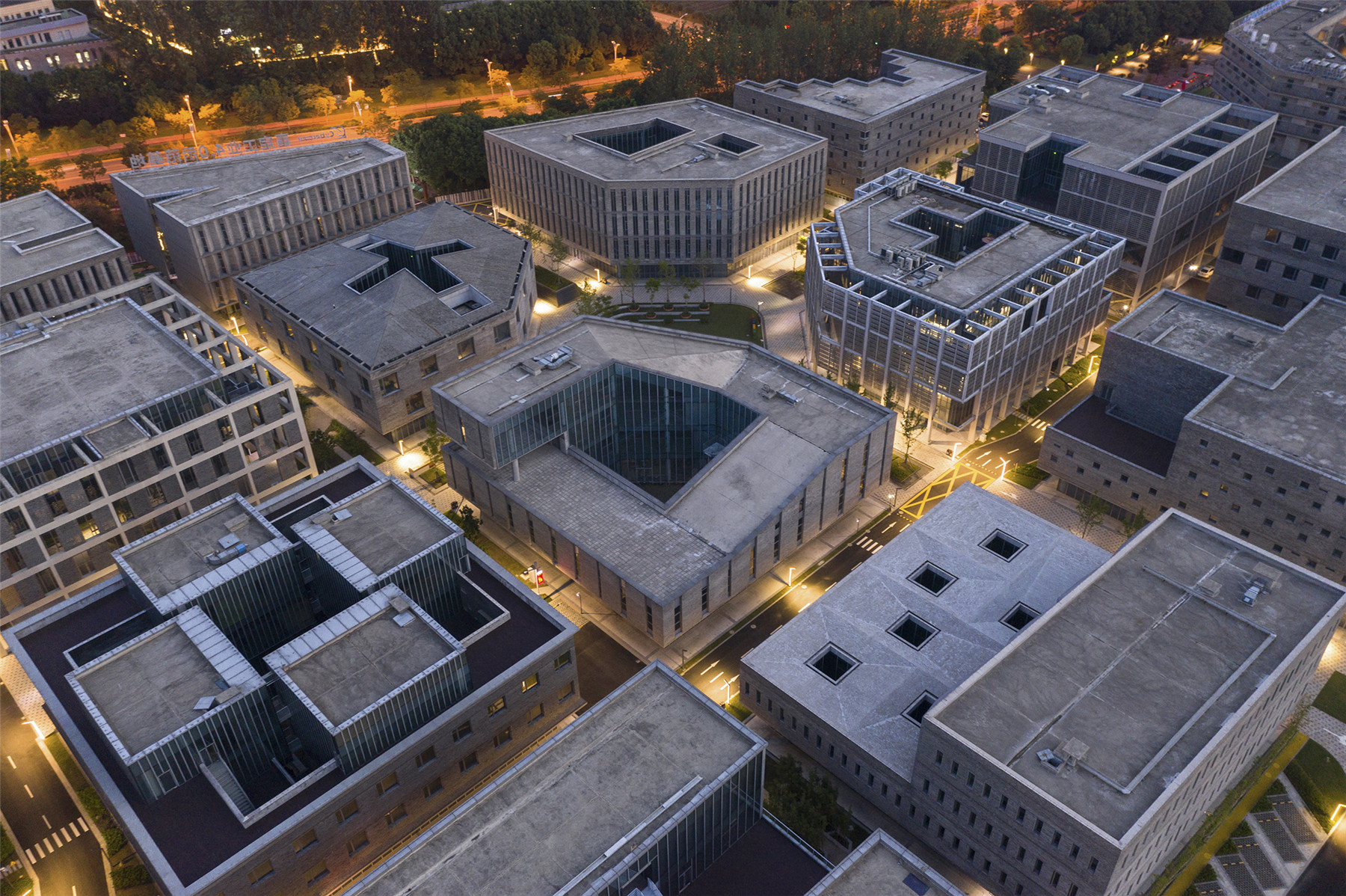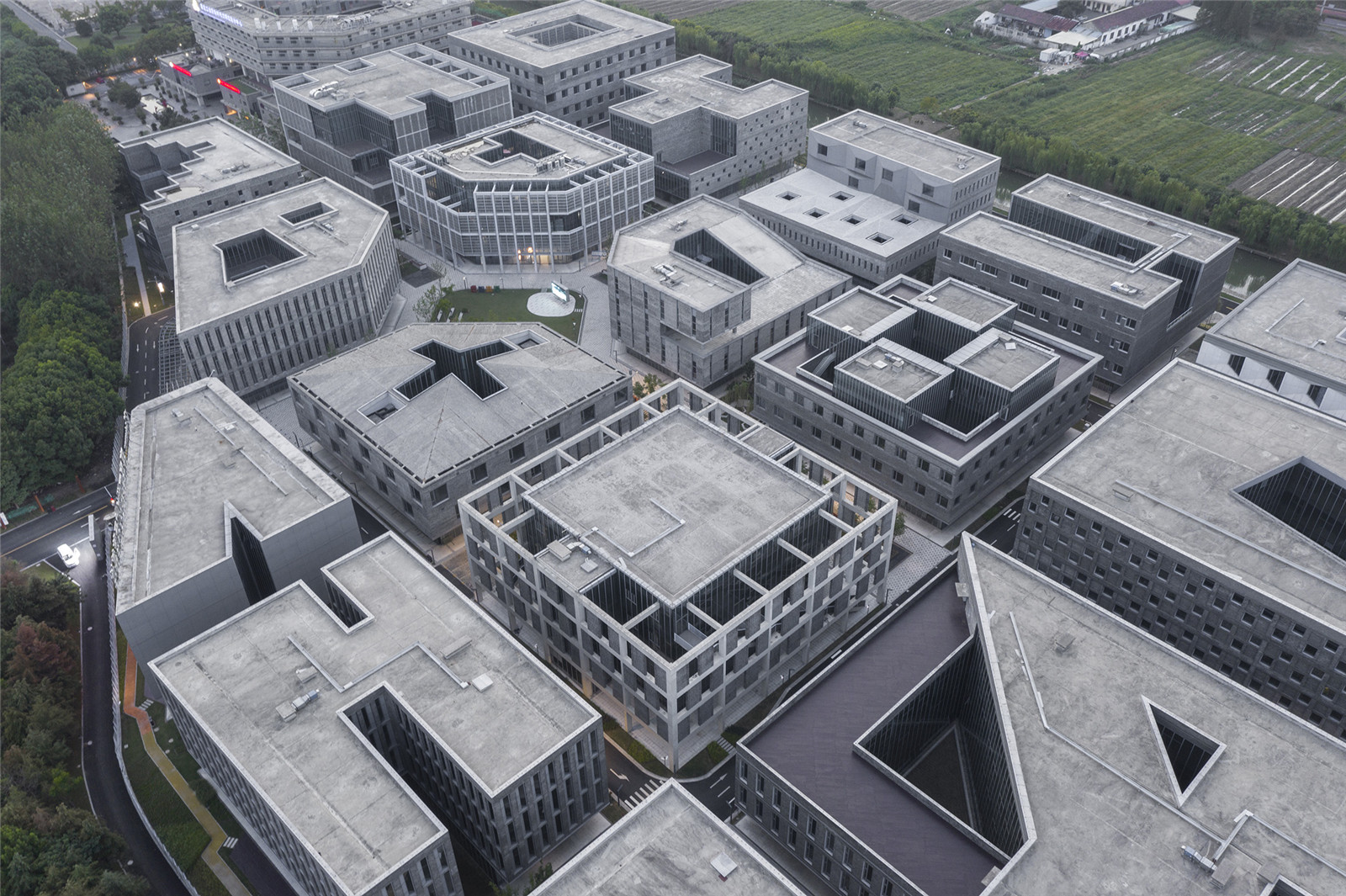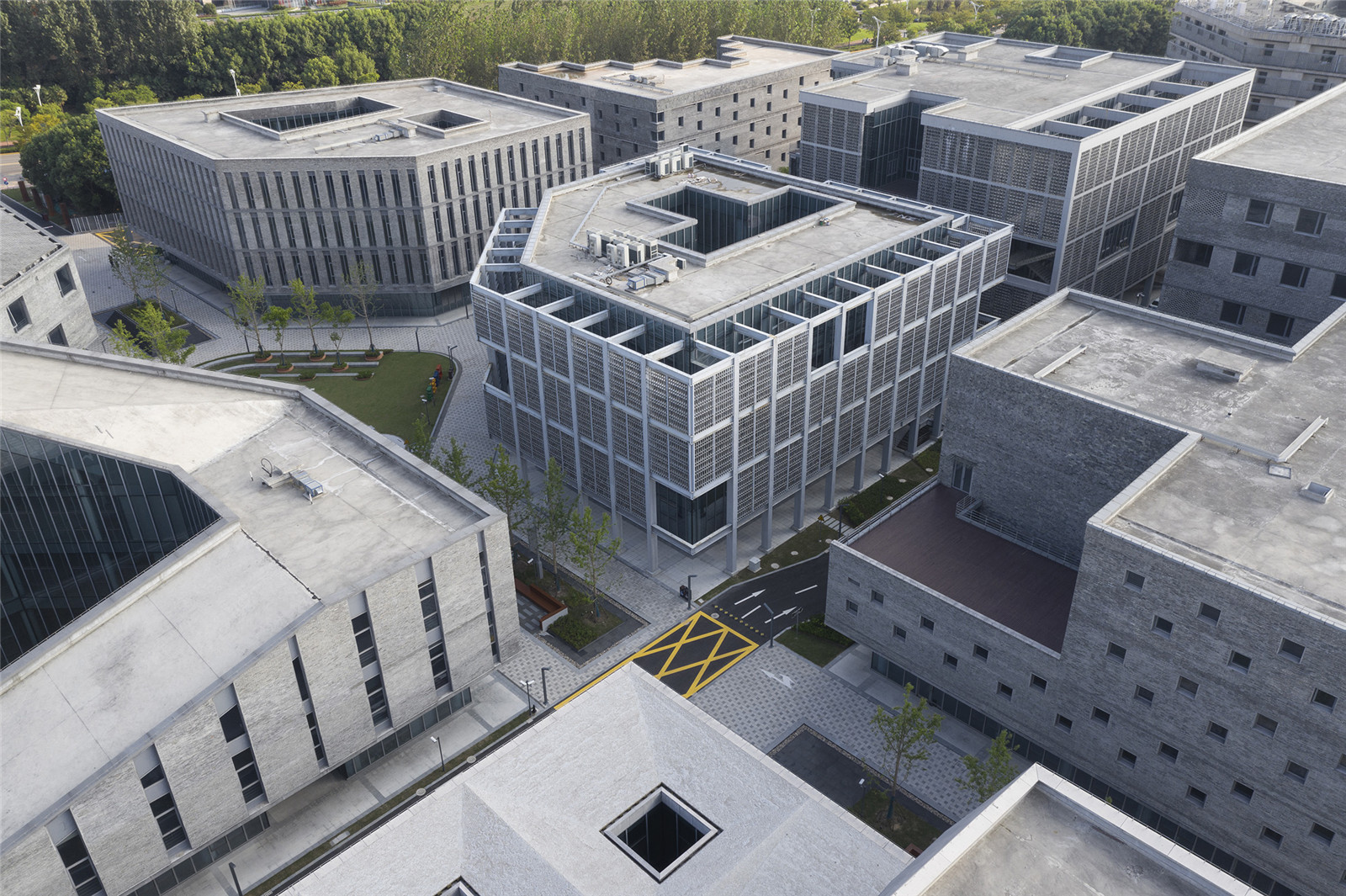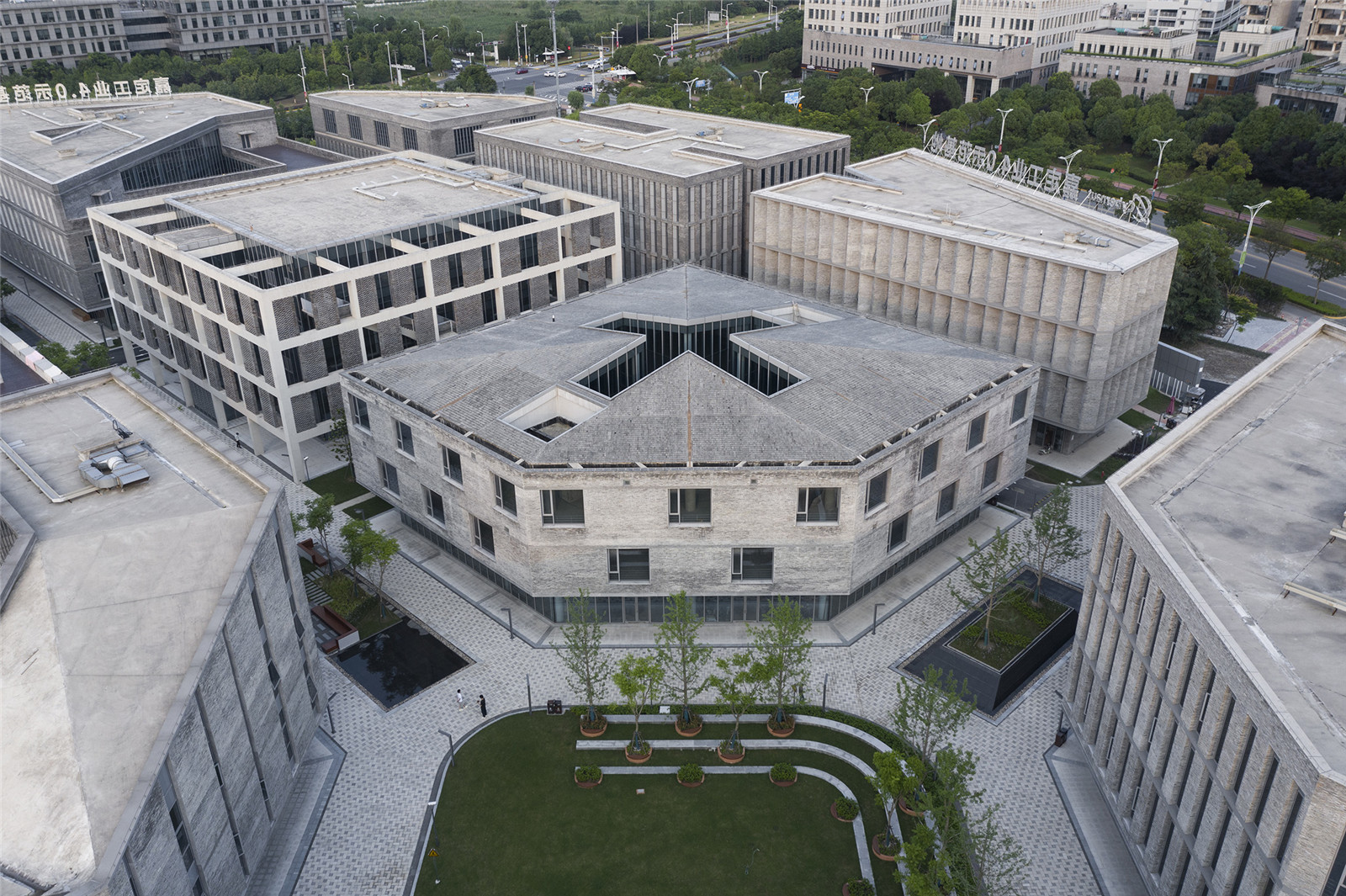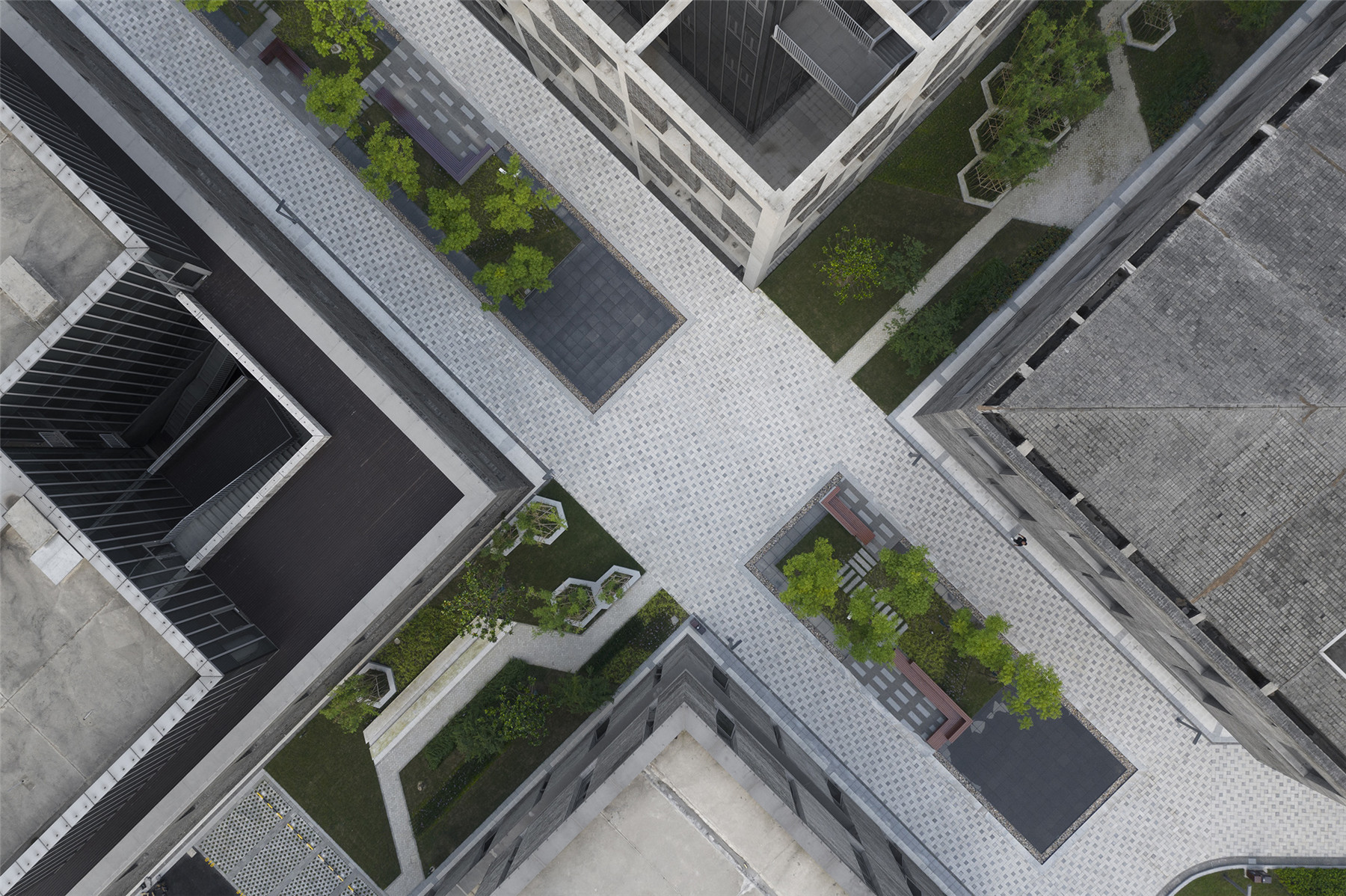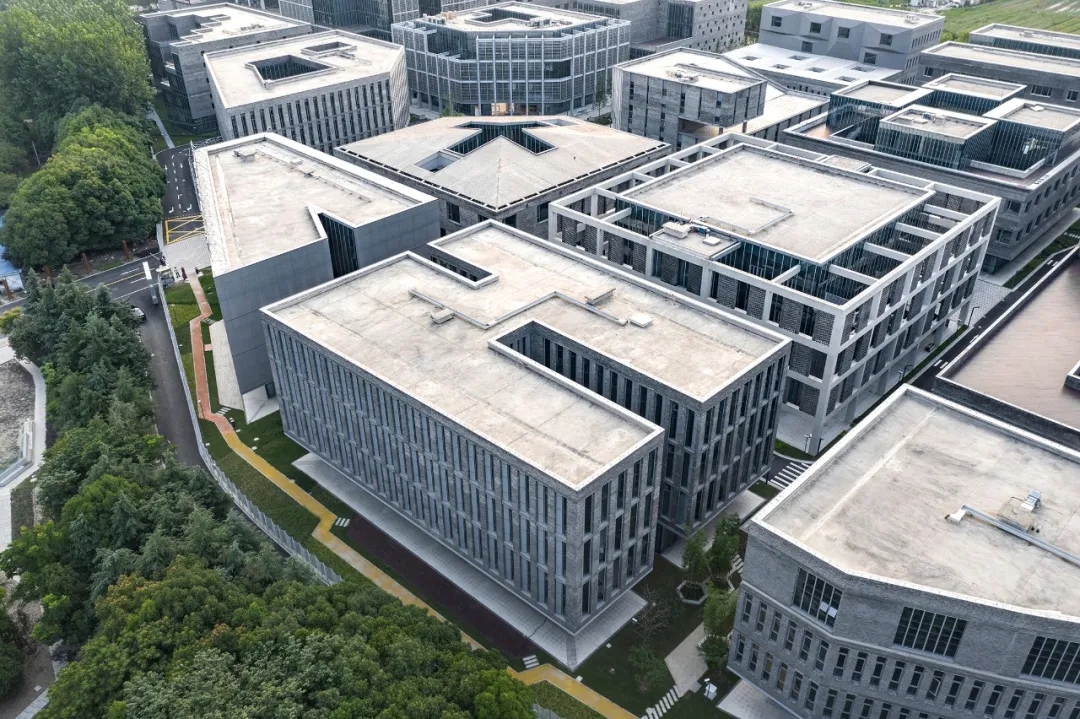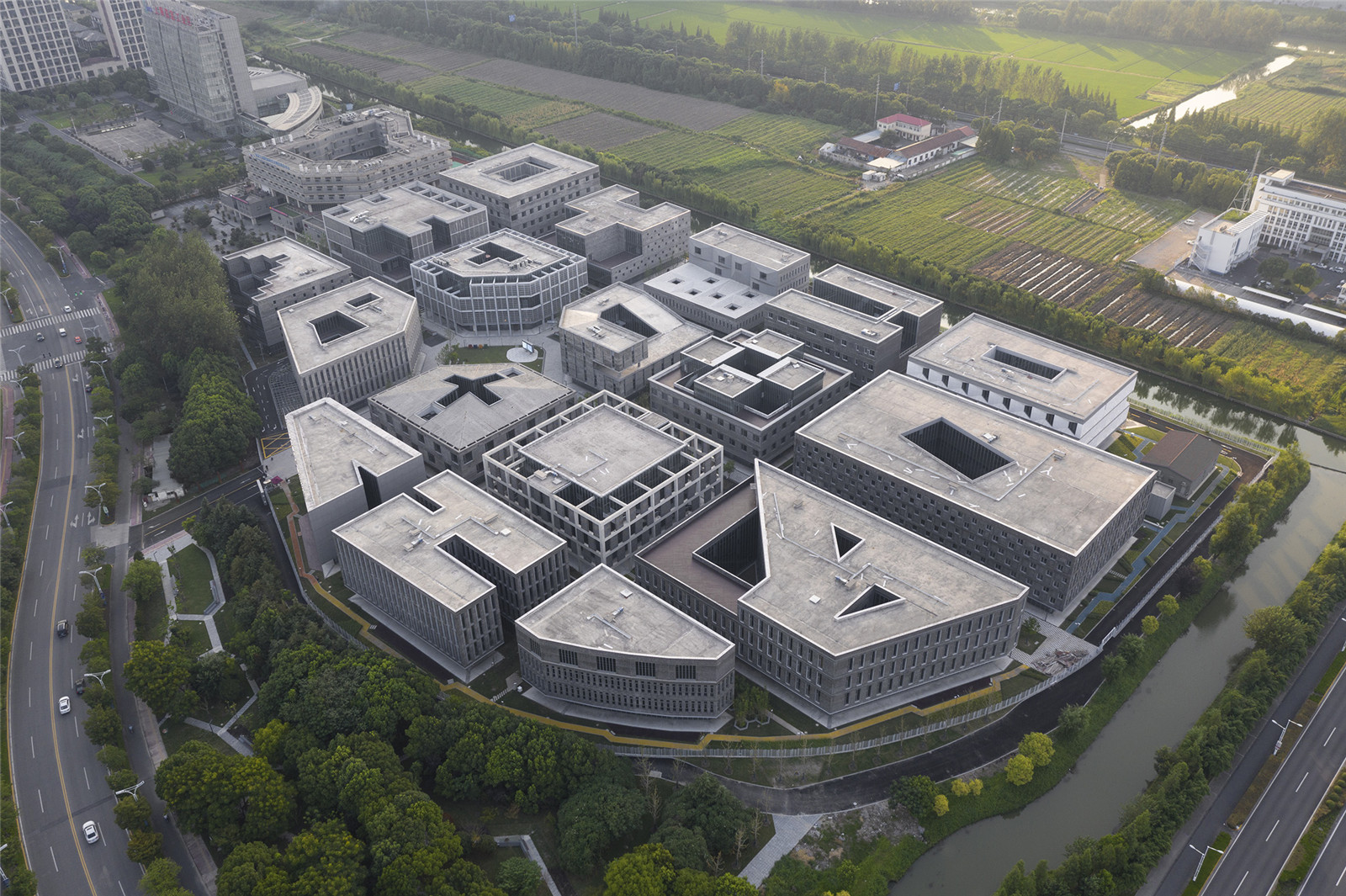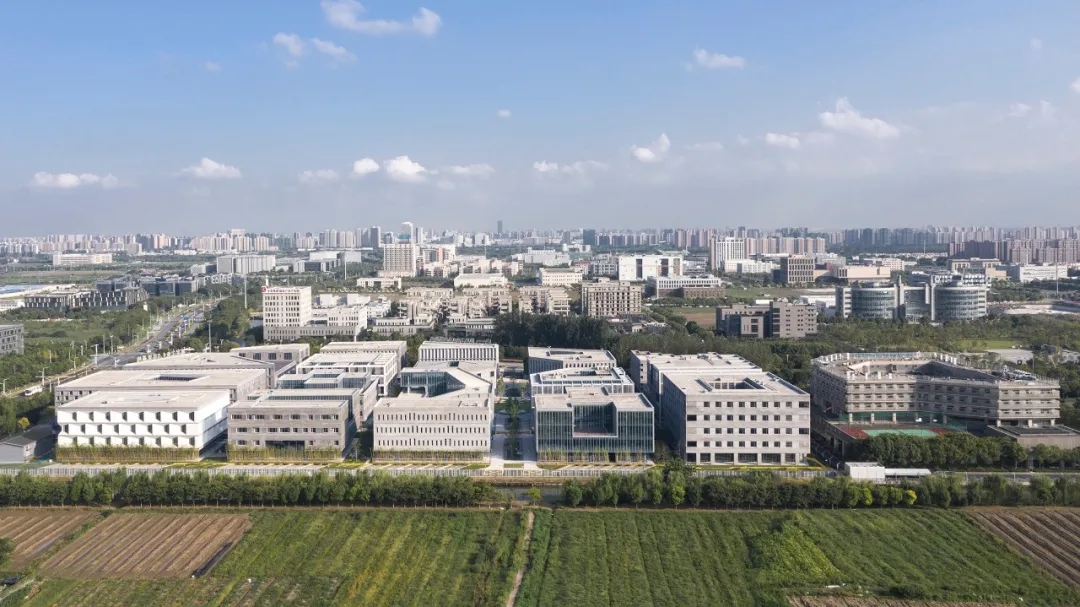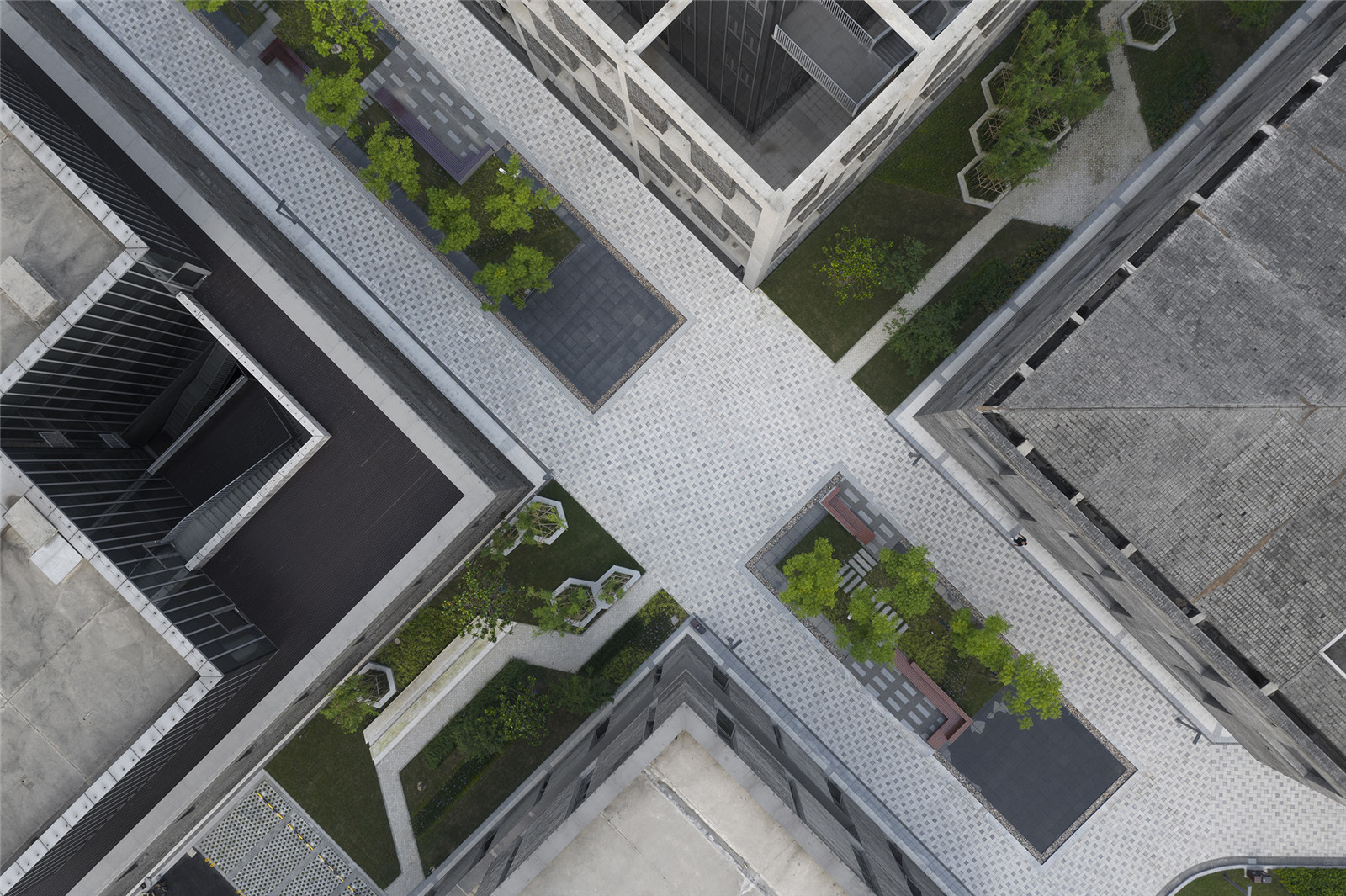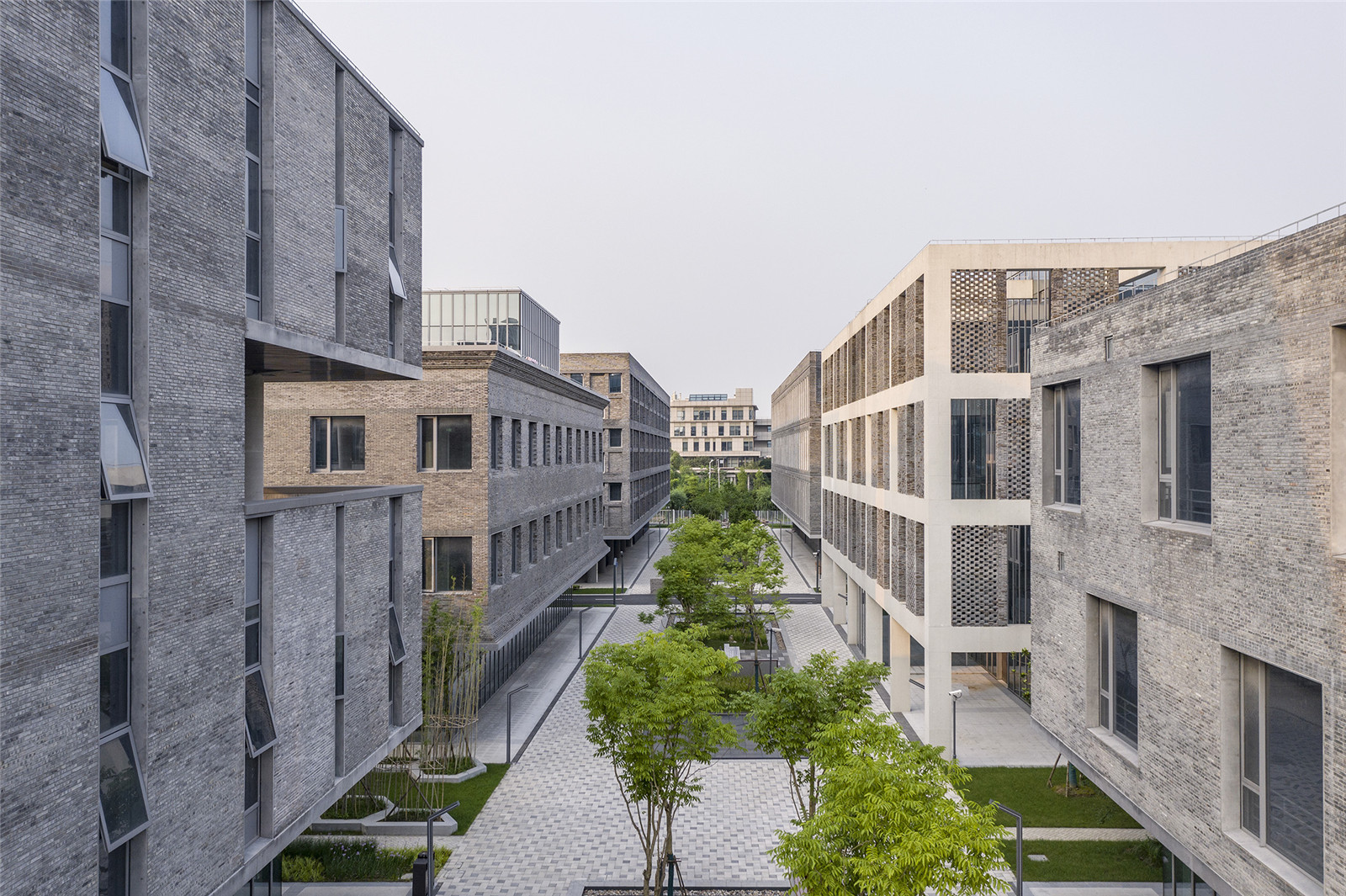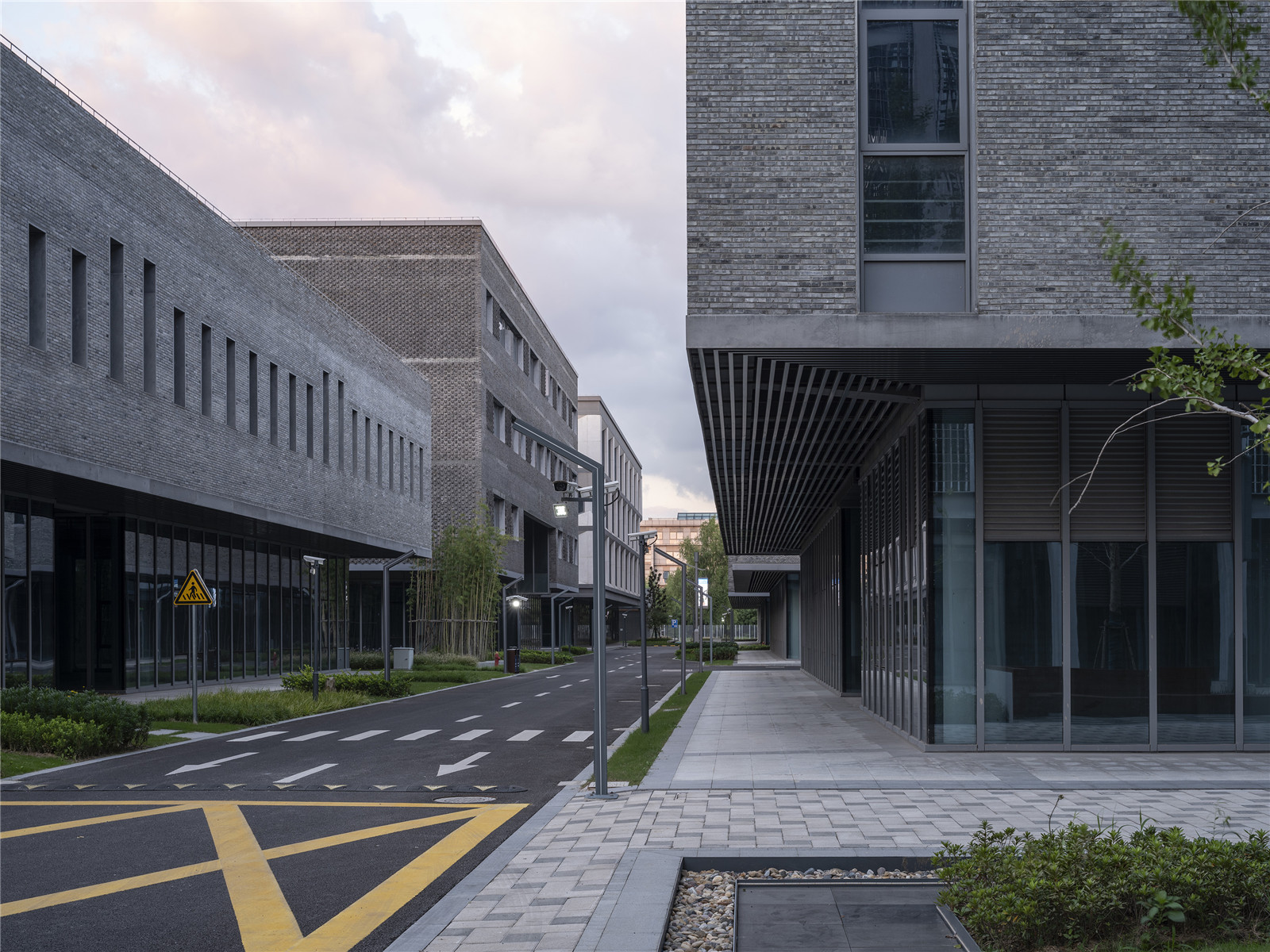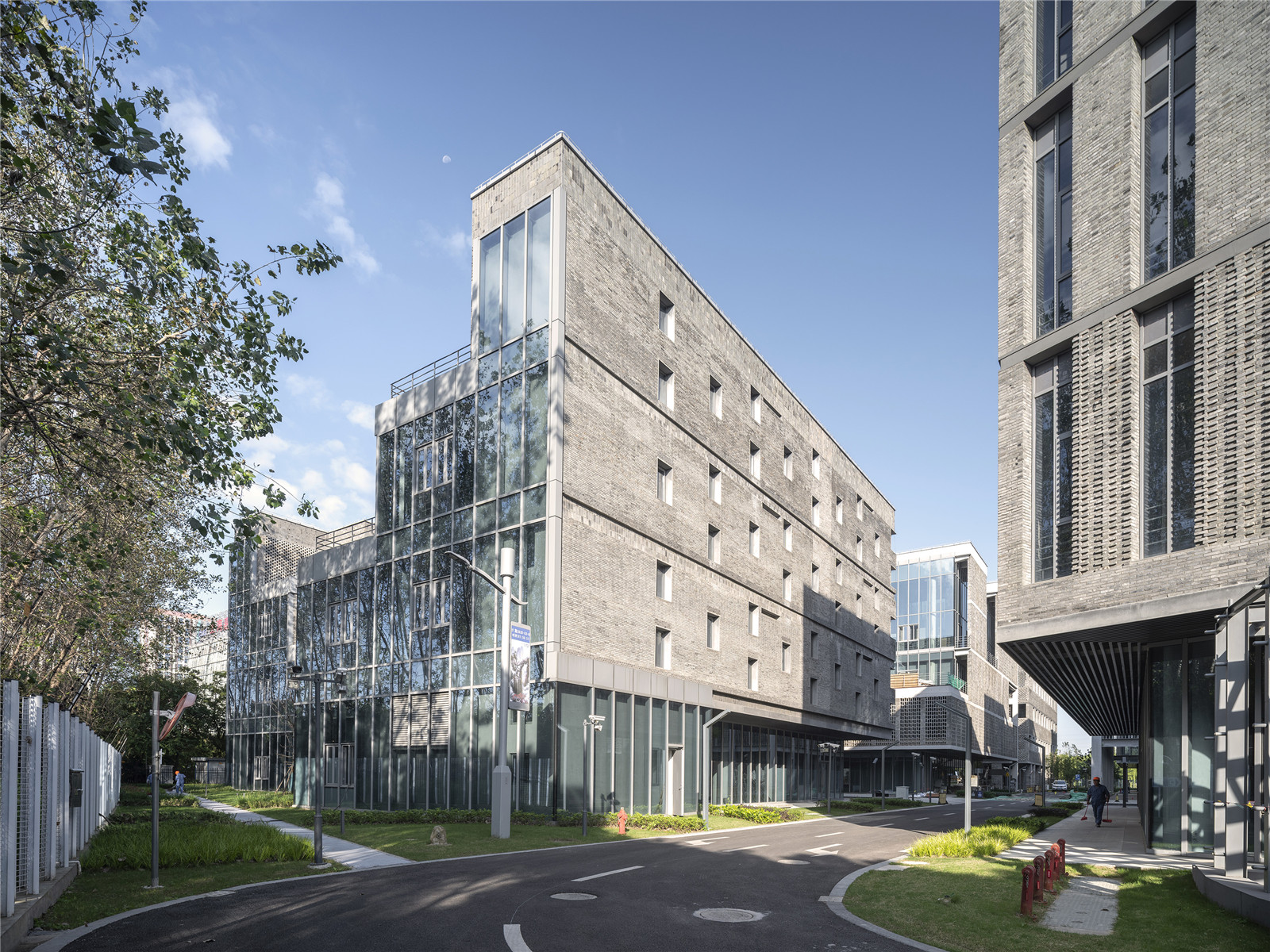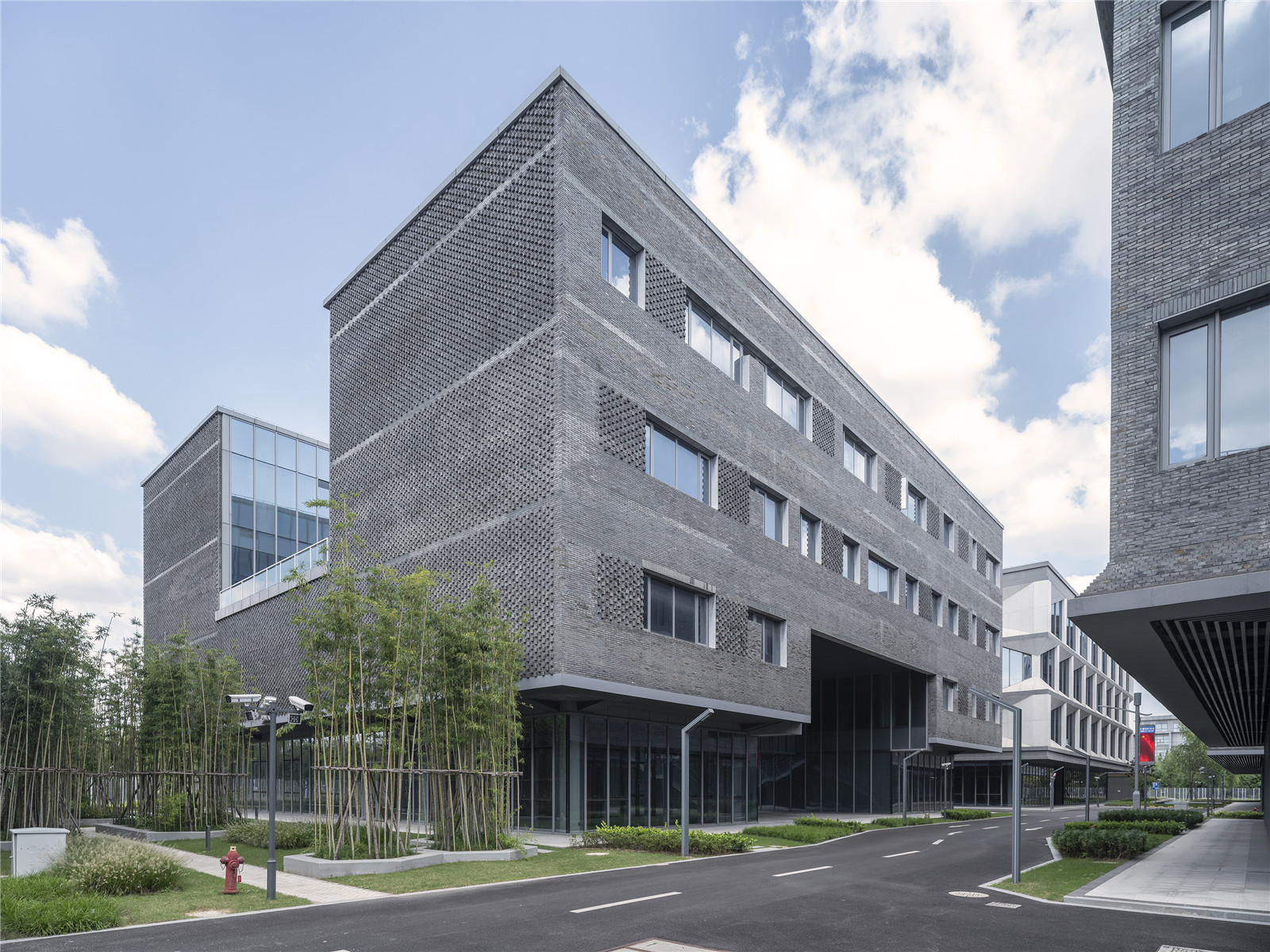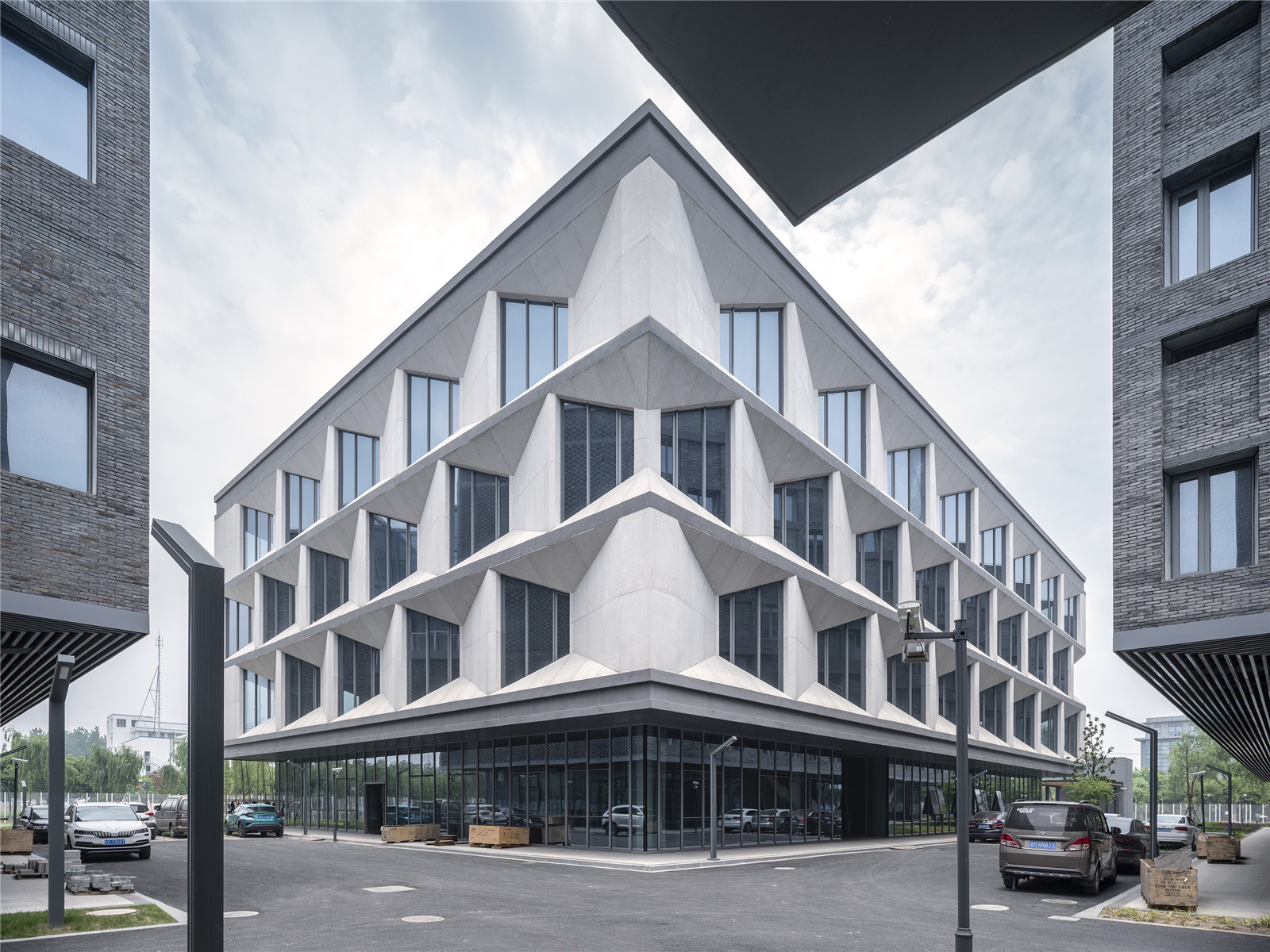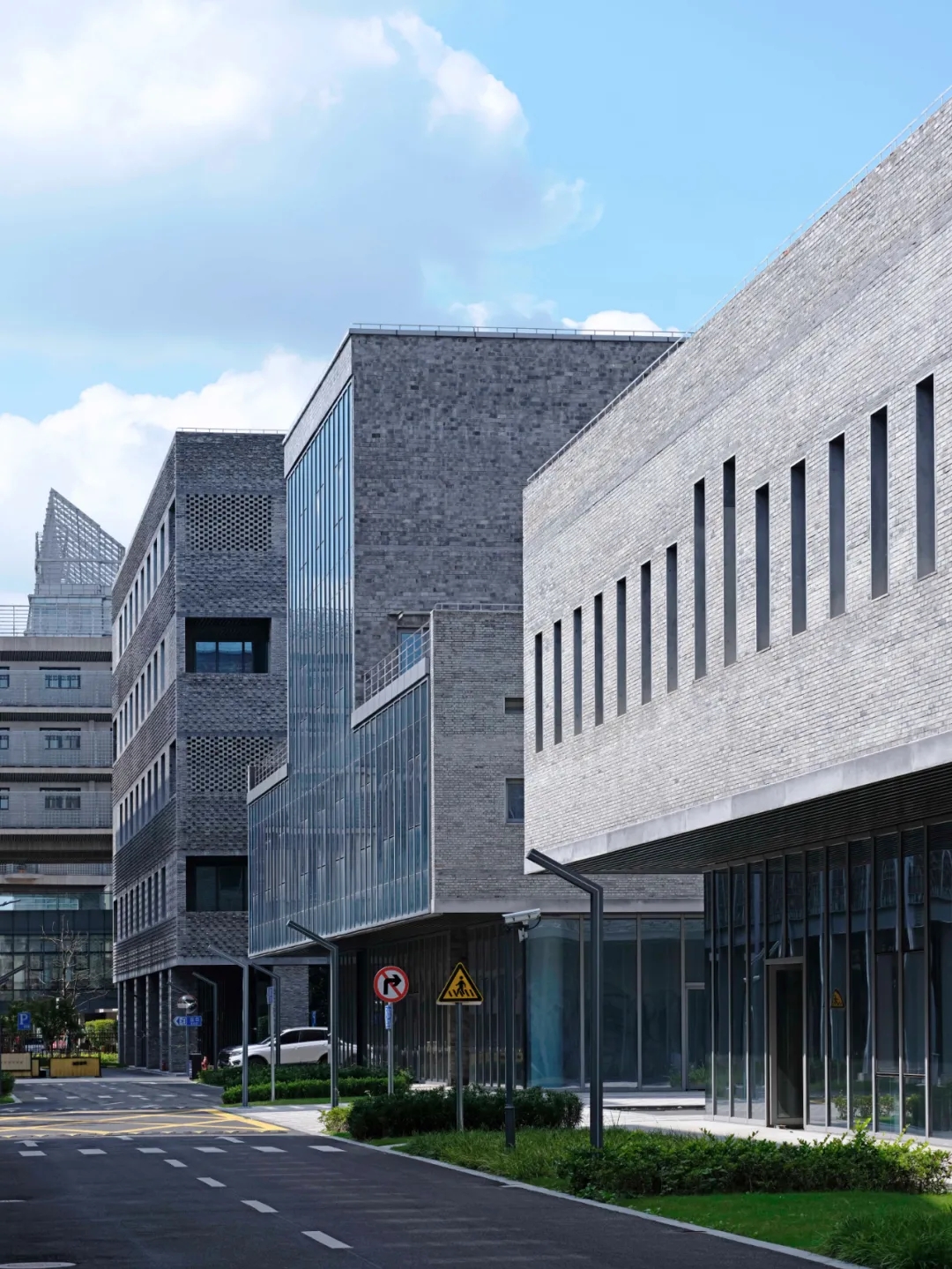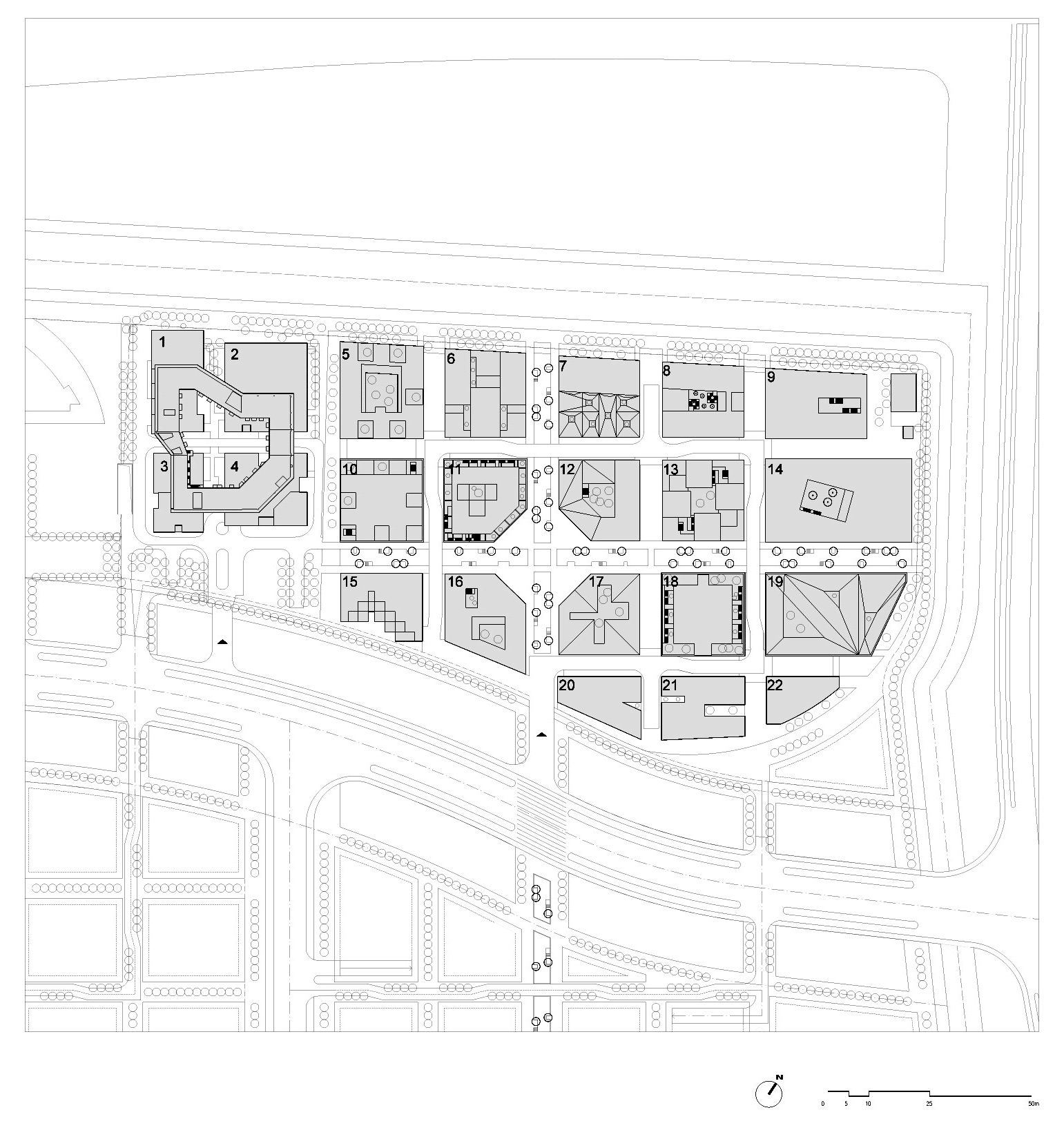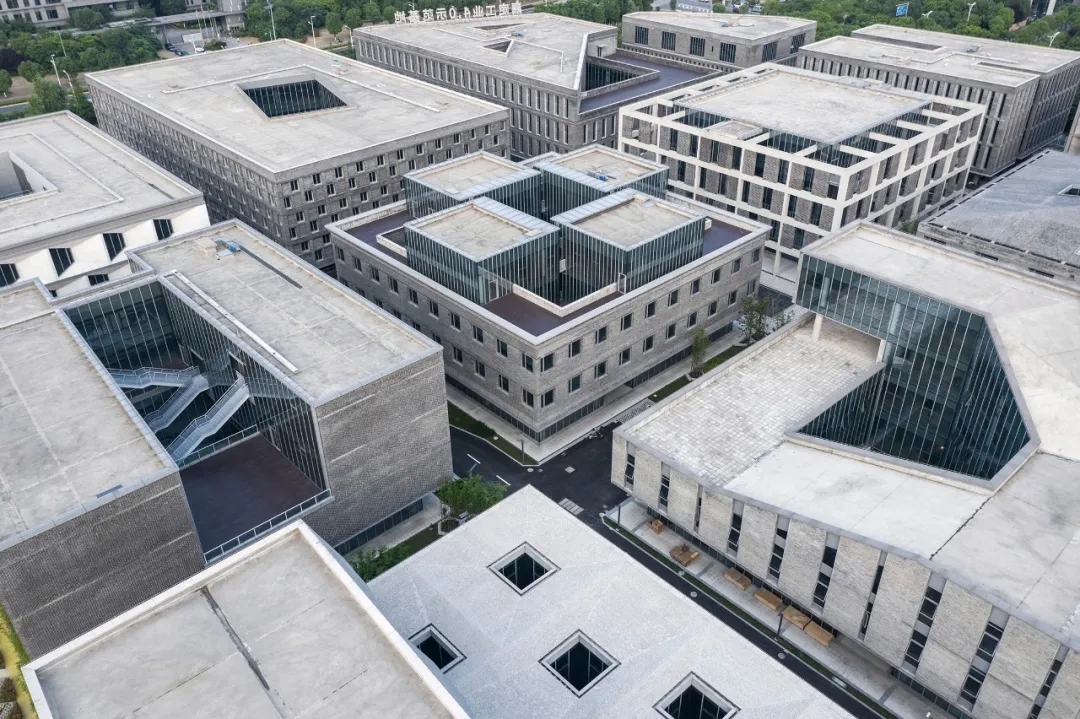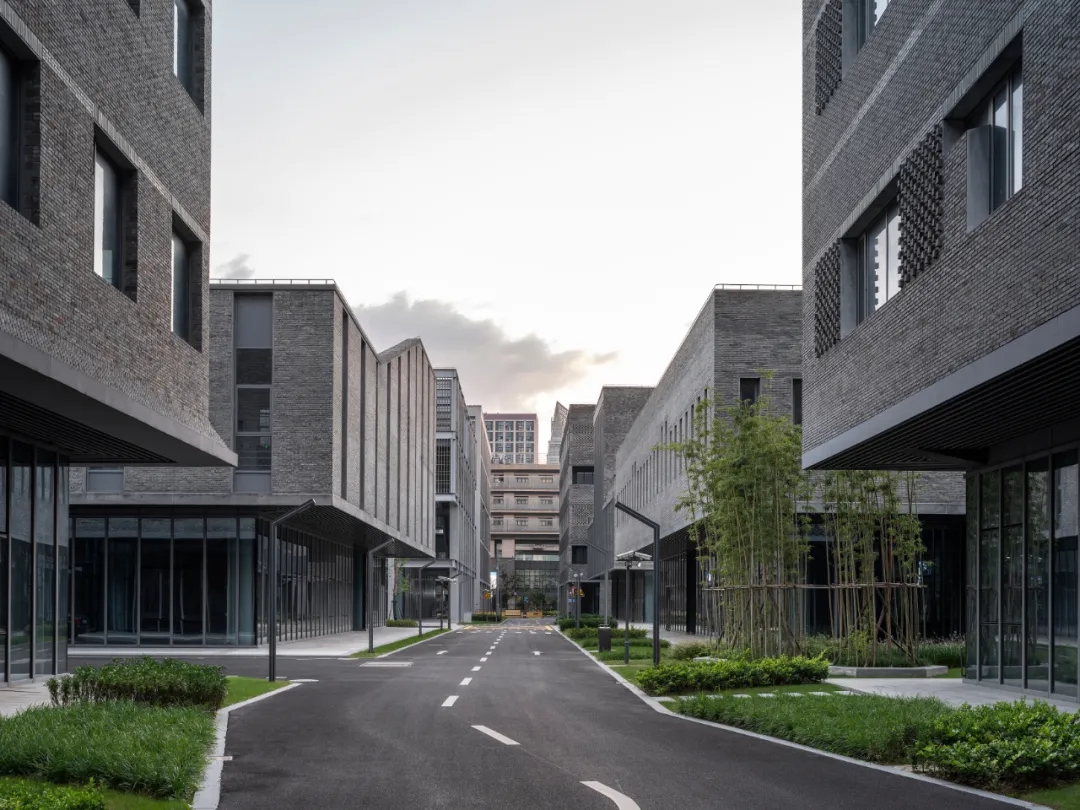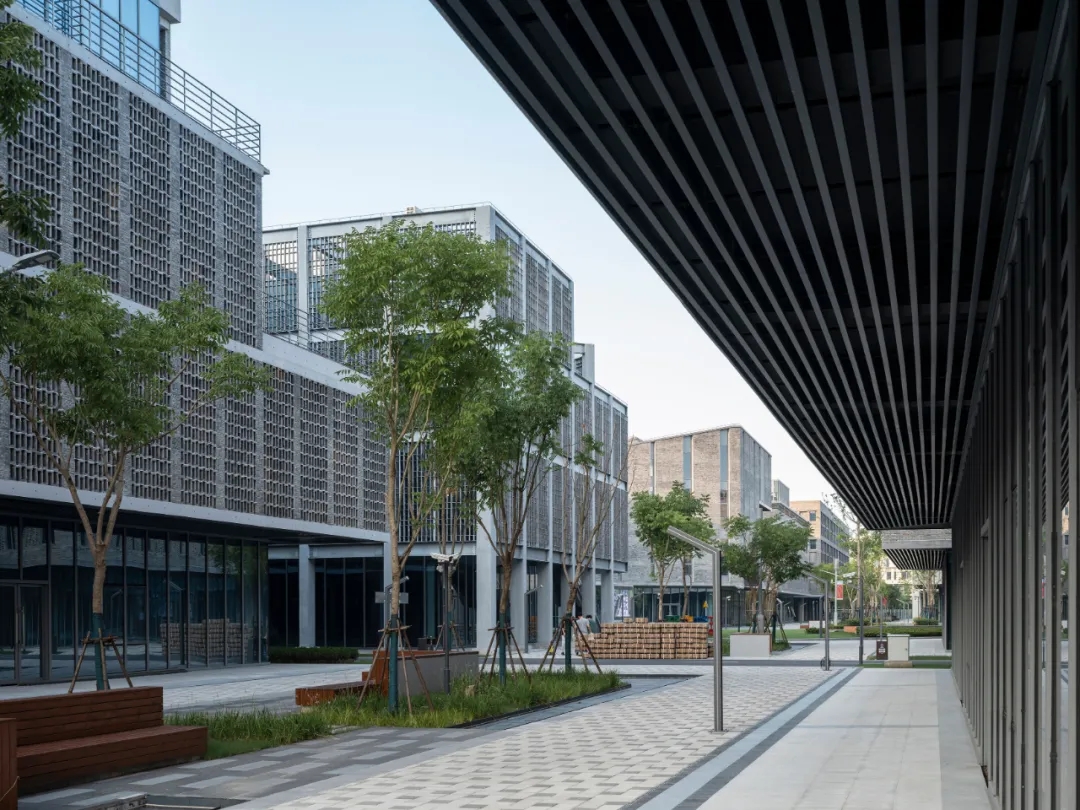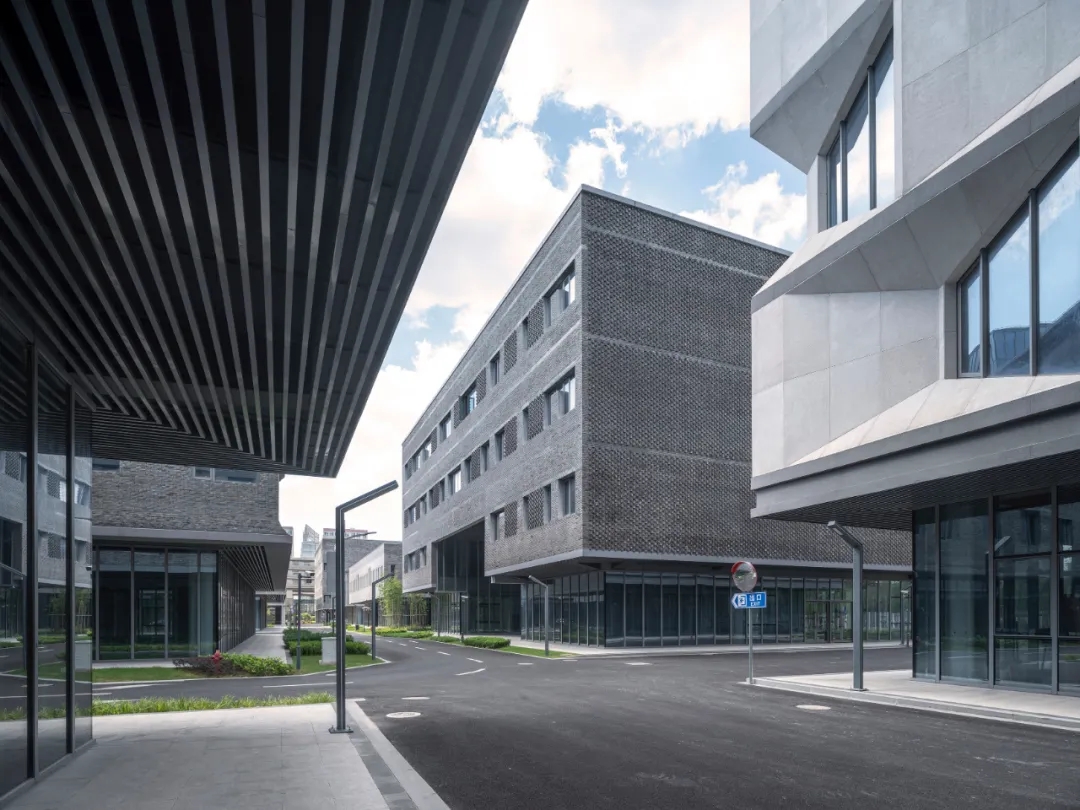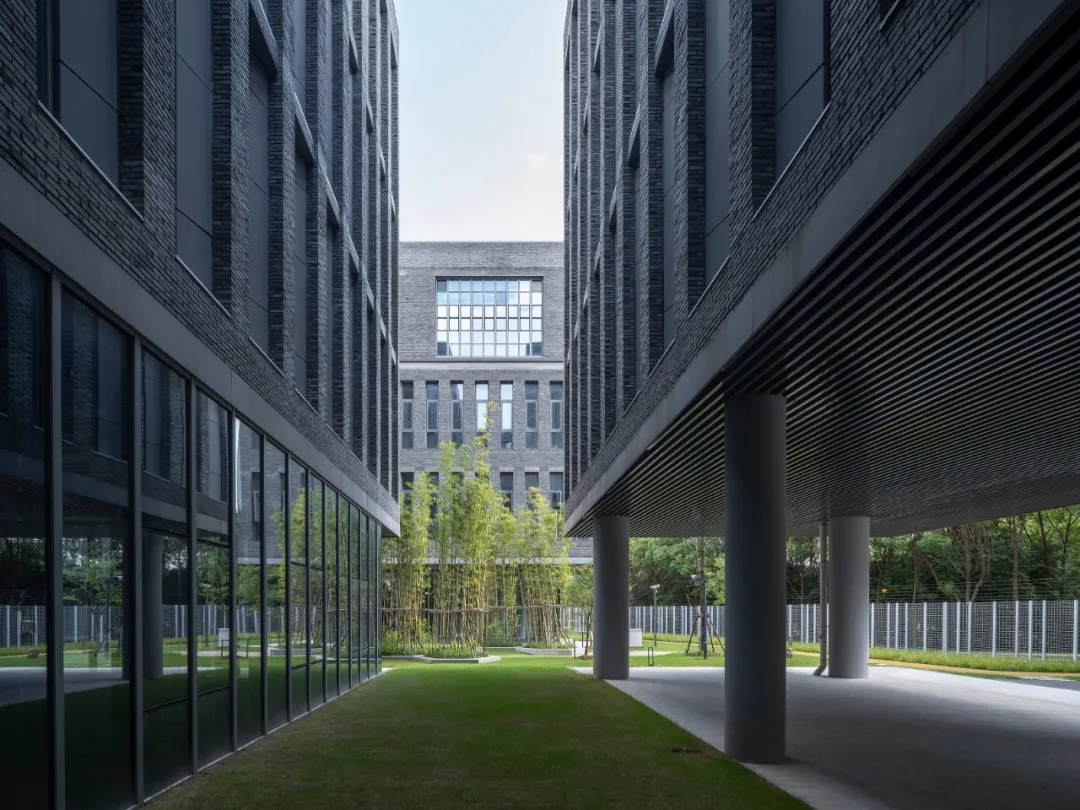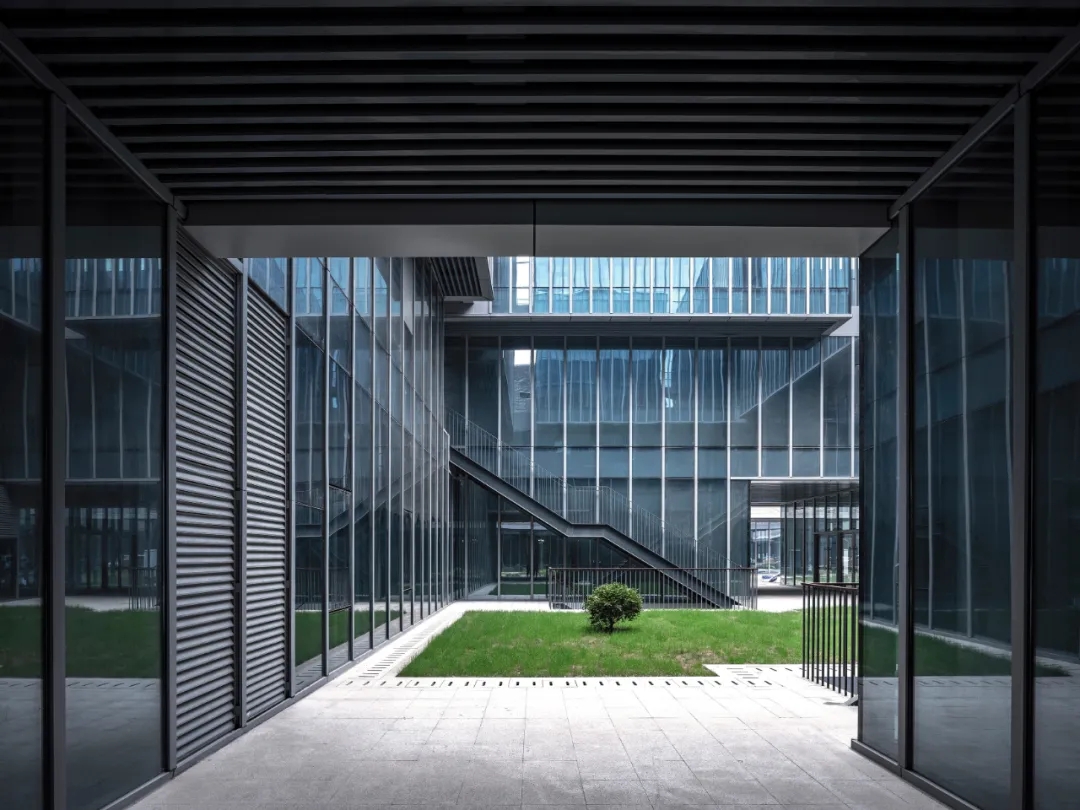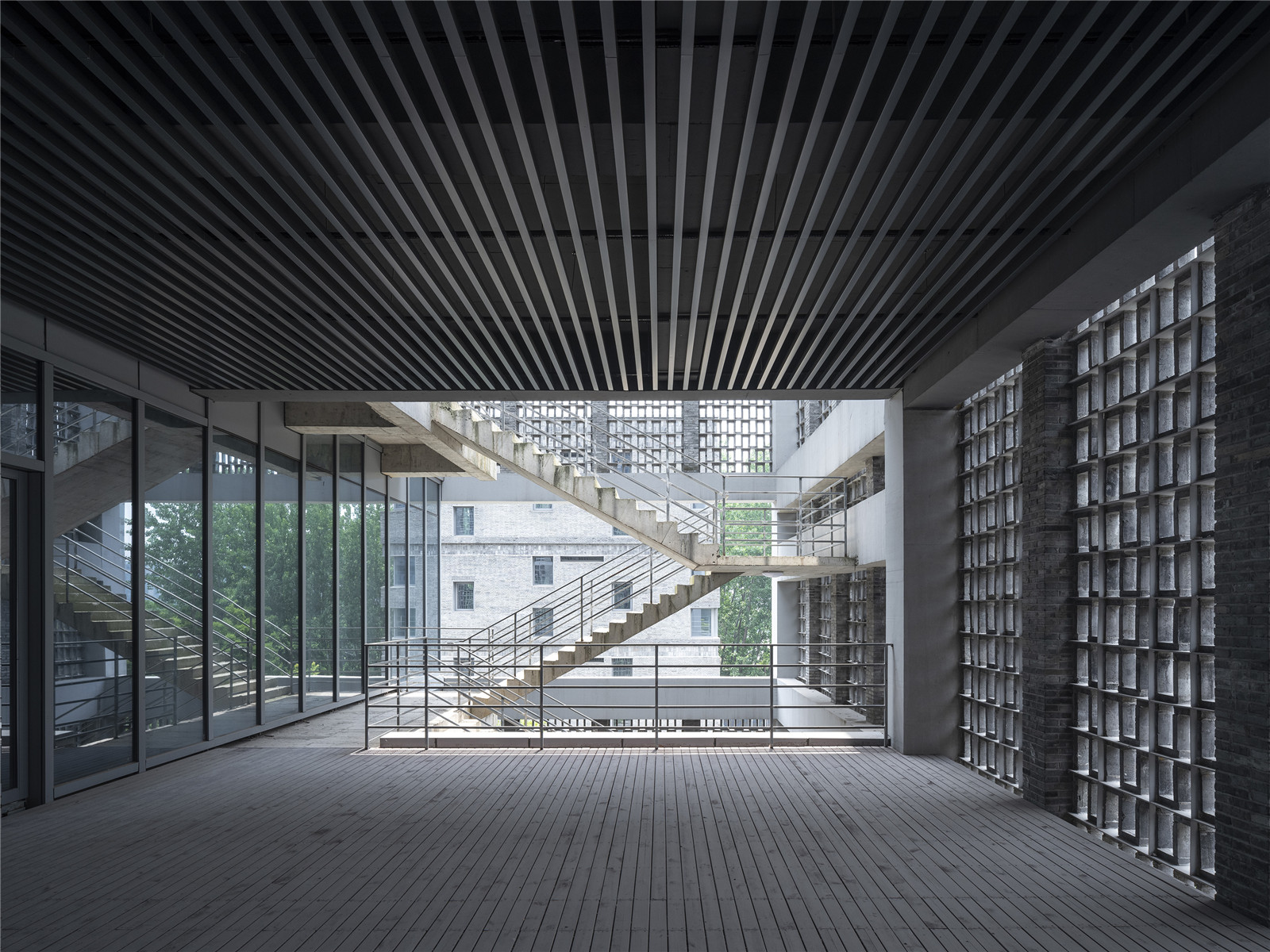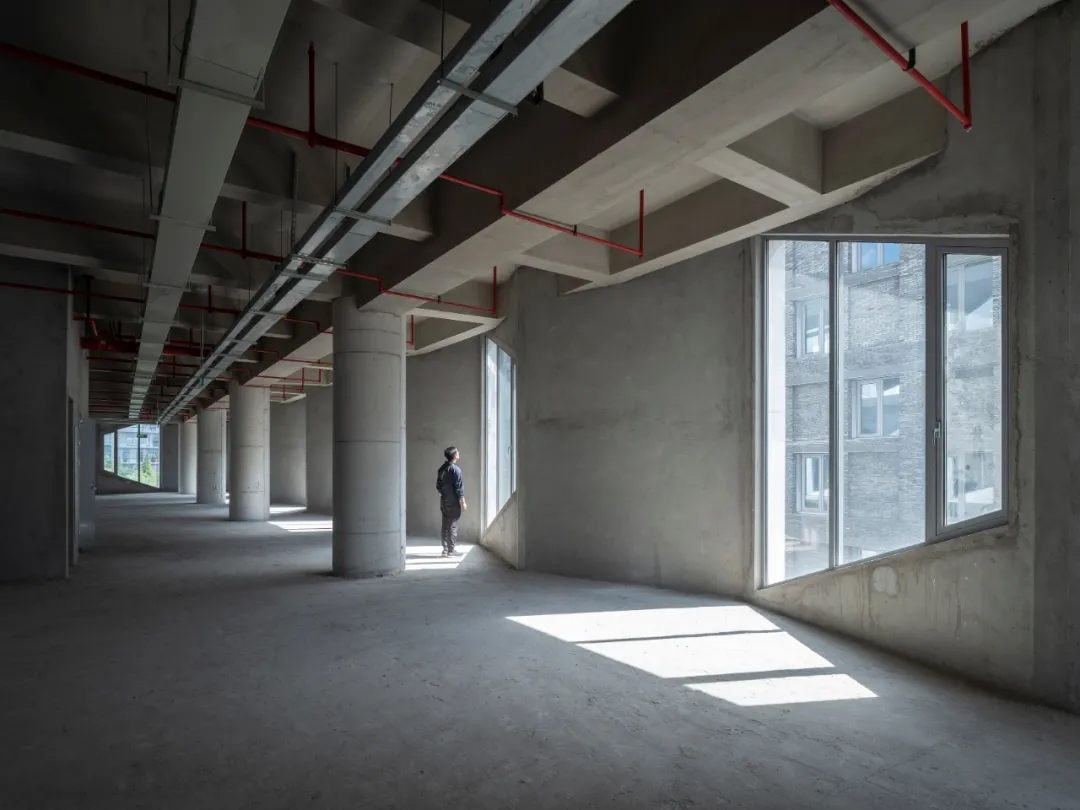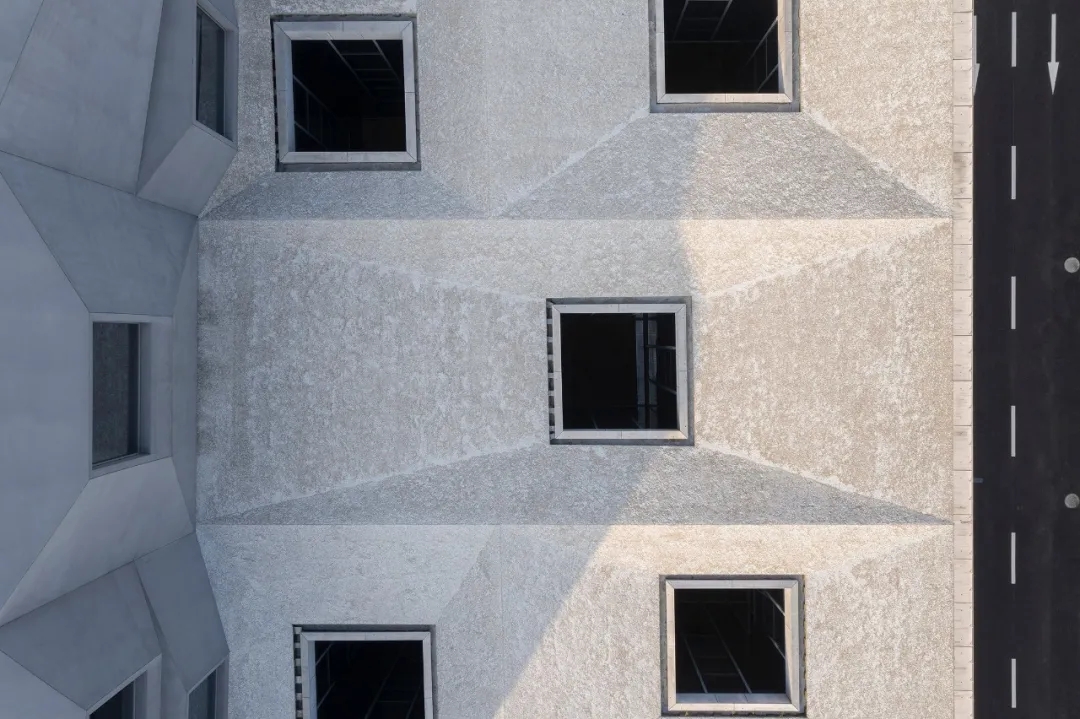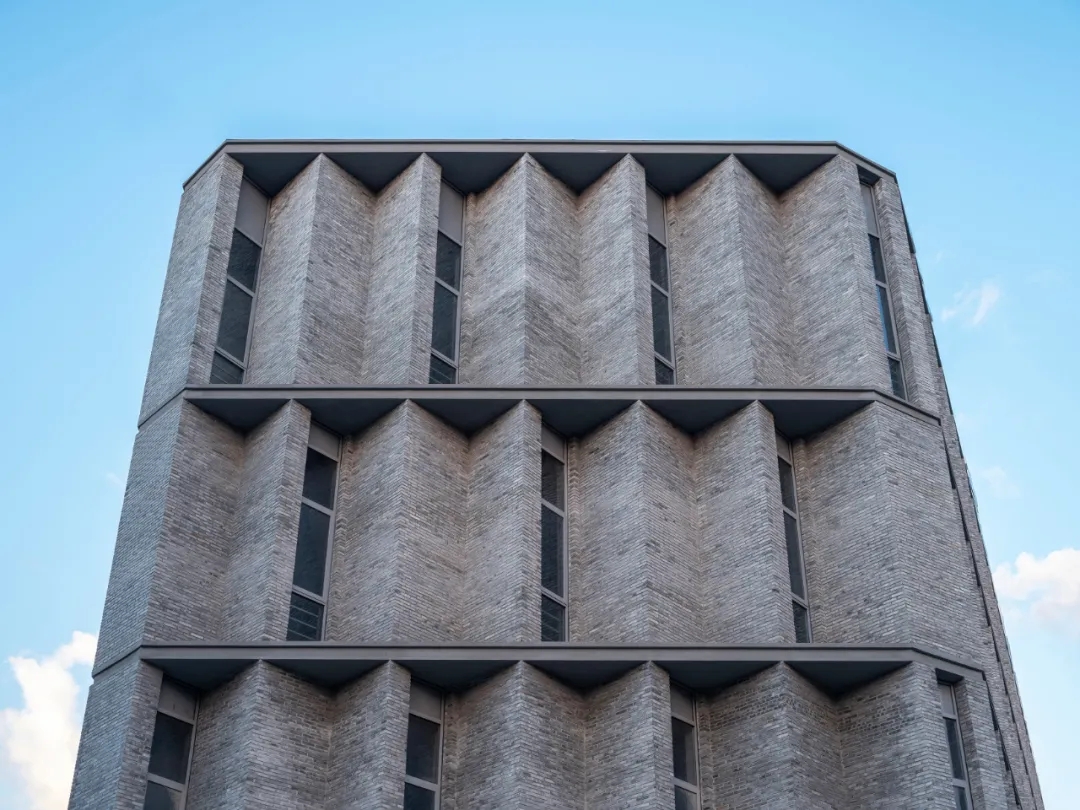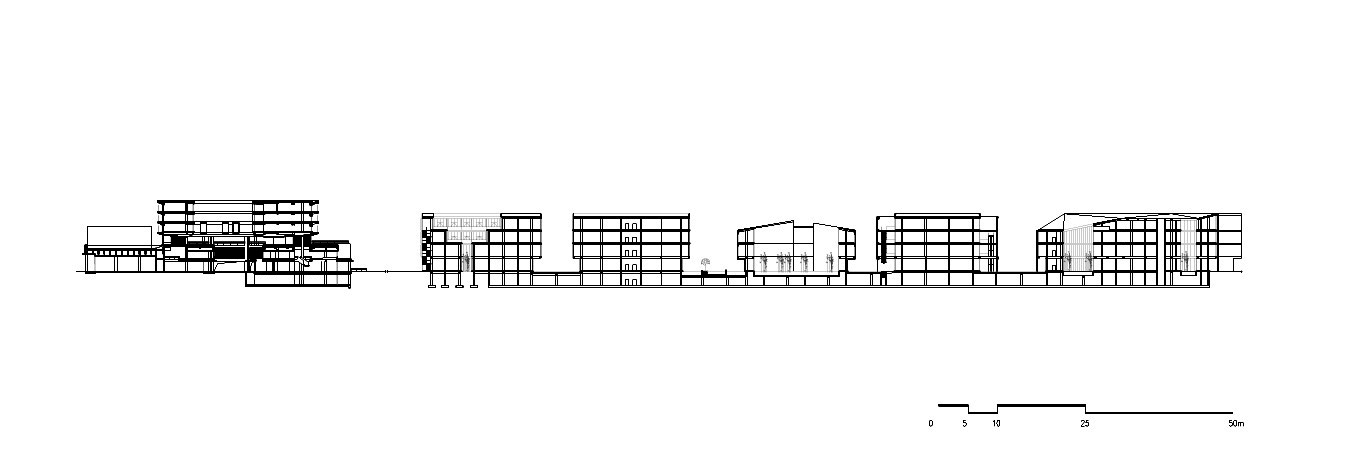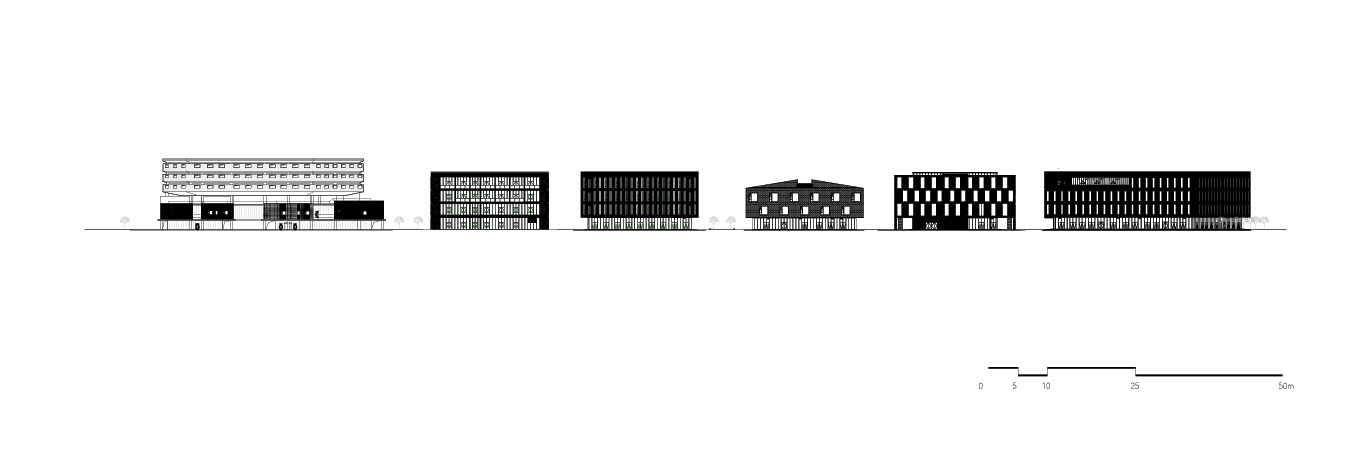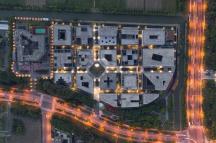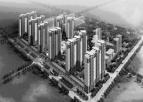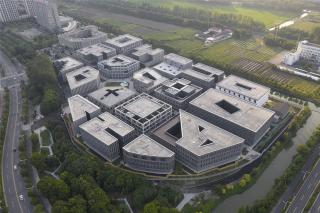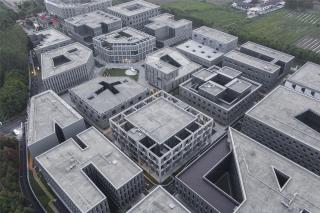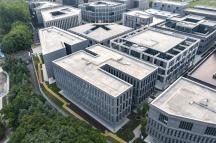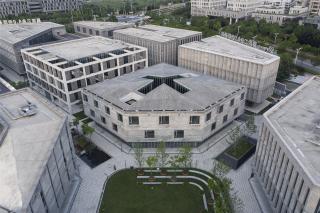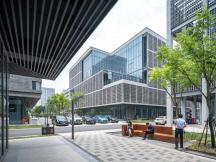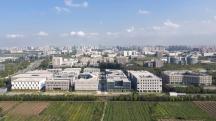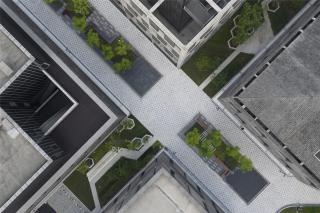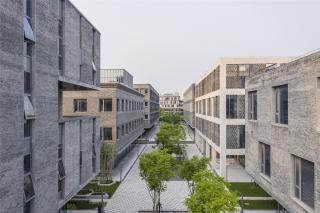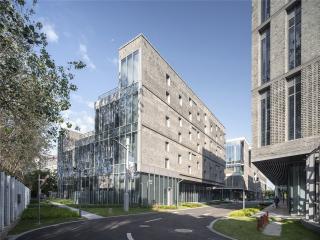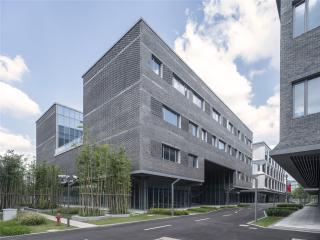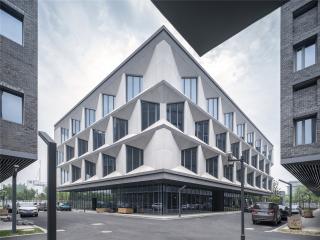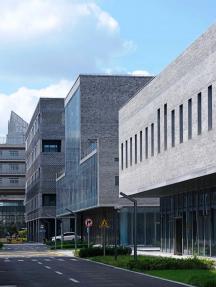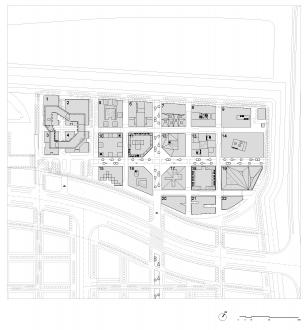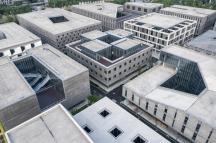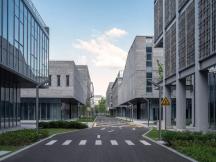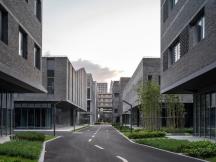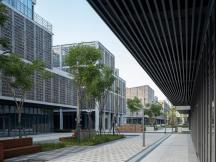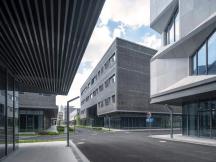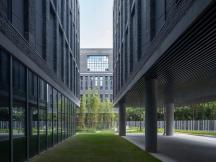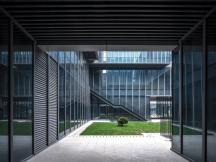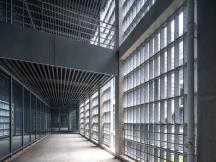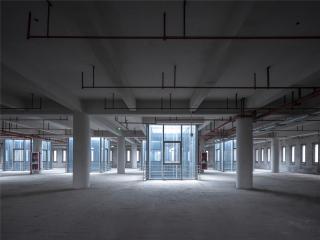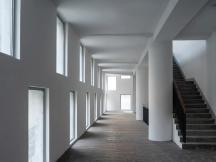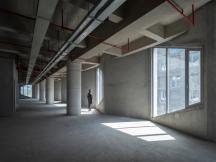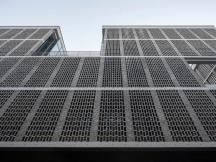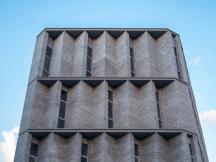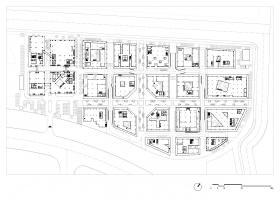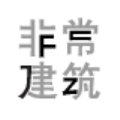背景
THE CONTEXT
在中國(guó)的新興城市里����,典型街區(qū)的大小約為500x500平方米以上。大型街區(qū)的問(wèn)題主要存在于兩方面:1����、反城市——它減少了建筑/社區(qū)與城市之間的互動(dòng); 2���、高碳排放——公共交通不進(jìn)入街區(qū)����,城市空間又不宜于步行���,使城市交通以小汽車(chē)為主導(dǎo)����。
The size of the typical block in new Chinese cities starts from approximately 500x500 square meters. The problem of the mega block is two-fold: 1. It is anti-urban – it weakens the interaction between buildings/communities and the city; 2. It is high-carbon – it makes an automobile-oriented city where public transportations stop outside the block and its scale does not support walking.
This observation suggests that the effort to reduce carbon emission could become an attempt to increase urbanity, which in turn inspires a modest, potentially effective, design strategy: Reduce the size of the block.
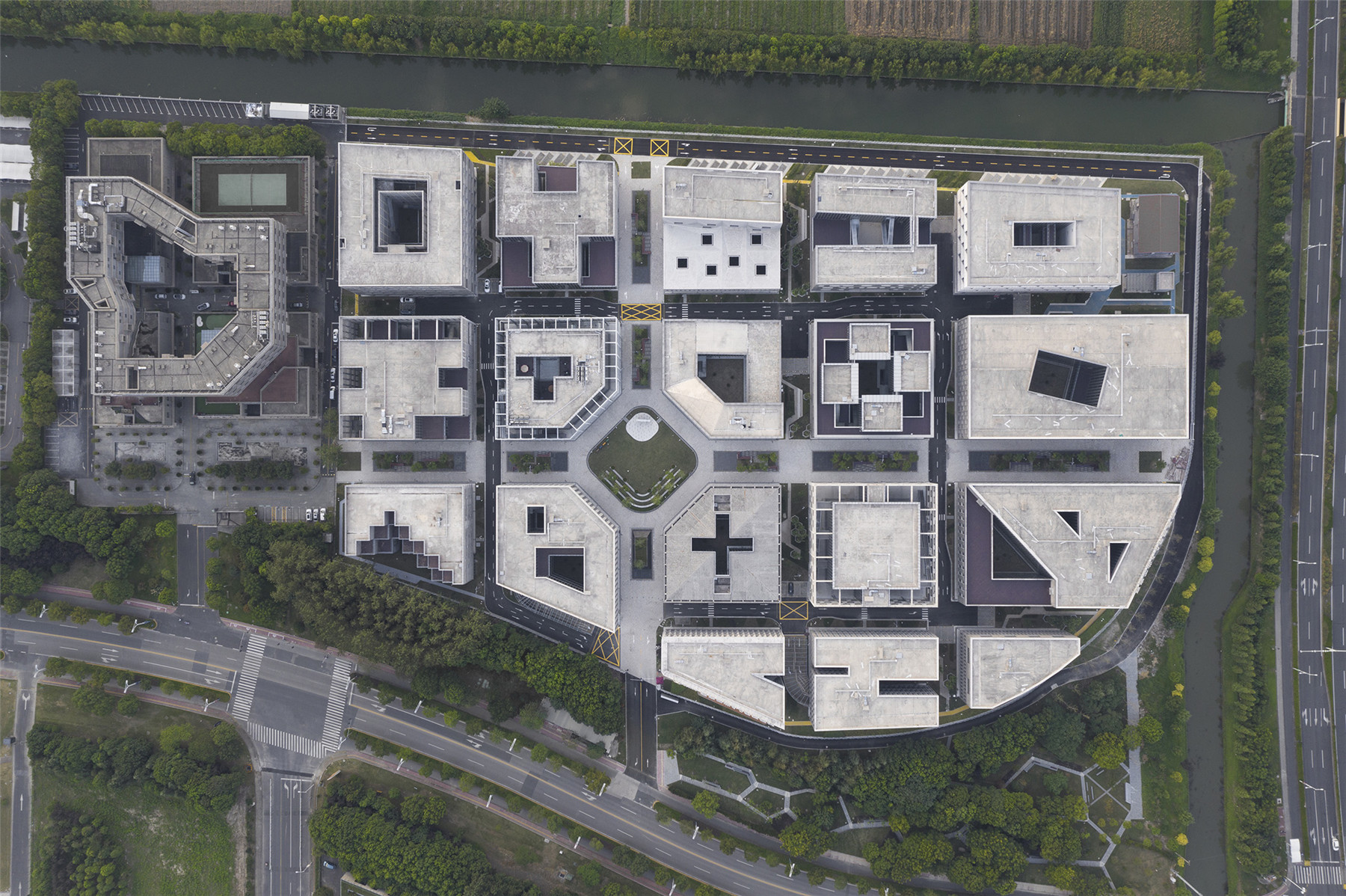
▲ 22個(gè)微型街區(qū)組成的城市肌理 Urban fabric formed by 22 Mini Blocks - 攝影 田方方
▲ 傍晚街燈亮起的街道 Evening view with street lights - 攝影 田方方
項(xiàng)目
The Project
當(dāng)非常建筑有機(jī)會(huì)在上海的嘉定設(shè)計(jì)工業(yè)4.0示范基地—一個(gè)辦公園區(qū)時(shí)�����,我們把面臨的挑戰(zhàn)定義為以下幾點(diǎn):典型辦公園區(qū)是郊區(qū)式的���,我們?nèi)绾文苁蛊涓鞘谢??城市空間的品質(zhì)是什么?如何讓人們更多地使用和享受城市空間���?
更具體的問(wèn)題是:一個(gè)街區(qū)能有多??�?
我們認(rèn)識(shí)到:密度�、比例和功能決定了一個(gè)街區(qū)的大小。由街道劃分的街區(qū)是城市肌理的一部分����。
When Atelier FCJZ was given the opportunity to design an office park outside of Shanghai in the satellite town of Jiading, the Industry 4.0 Demonstration Base, we defined the challenge as following:The bigger questions: An office park is typically suburban, can we turn it more urban? What are the qualities of urban space? How to make the people use and enjoy them more?
Furthermore, we focused on one specific question:How small can a block be?
The size of a block is determined by density, scale, and program. A block is part of the urban fabric and defined by streets.
▲ 從肌理推進(jìn)街區(qū)和街道 Zooming in on blocks and streets - 攝影 田方方▲ 典型十字路口 Typical intersection - 攝影 田方方
▲ 廣場(chǎng) The square - 攝影 田方方▲ 步行道的十字路口 Intersection of pedestrian streets - 攝影 田方方▲ 項(xiàng)目邊緣有一條步行小徑 Edge of the project with a footpath
▲ 街道生活出現(xiàn)了 Street life appears - 攝影 田方方
肌理
The Fabric
在我們提出的總體規(guī)劃中,通過(guò)低層數(shù) (4層)��,高密度(平均總體規(guī)劃容積率1.2 /街區(qū)容積率2)平鋪和混合功能�����,來(lái)提高城市的便捷性:這些建筑主要為高科技公司辦公�,一層為公共/商業(yè)設(shè)施,居住部分(由于中國(guó)的功能分區(qū)法規(guī)中要求工業(yè)園內(nèi)只能有租賃公寓和酒店�,而不能有公寓)在頂層。
In the master plan we propose, urban accessibility is improved by a low-rise (4 stories) high density (average master plan FAR 1.2 / block FAR 2) carpet and mixed programs: Mainly offices for high-tech companies with public/ commercial facilities on the street level and some residential elements (rental apartments and hotels but not condominiums due to Chinese zoning regulation) on the top floor.
▲ 全景鳥(niǎo)瞰�,可看到限高為4層 Overall birdsight view showing 4-story height limit - 攝影 田方方
▲ 邊緣街道立面 An Elevation of an edge street
街道
The Street
這里的主要城市空間是街道,街道寬10米��,由兩側(cè)建筑1層高、3米寬的騎樓(有頂步行道)界定���。由于該項(xiàng)目位于長(zhǎng)江以南地區(qū)����,騎樓可以在漫長(zhǎng)的雨季和夏季陽(yáng)光灼熱時(shí)為行人提供方便�。
The primary urban space here is the street, which is 10 meters wide and spatially defined by the 3-meter wide covered walkways on the ground level of the buildings on both sides. As the project is situated in the southern Yangtze River region, covered walkways protect pedestrians from long rainy season and excessive sun in the summer.
▲ 步行道的十字路口 Intersection of pedestrian streets▲ 景觀步行道 Pedestrian street with landscape - 攝影 田方方

▲ 步行道兩側(cè)的騎樓 Pedestrain street with covered walkway on both sides - 攝影 田方方
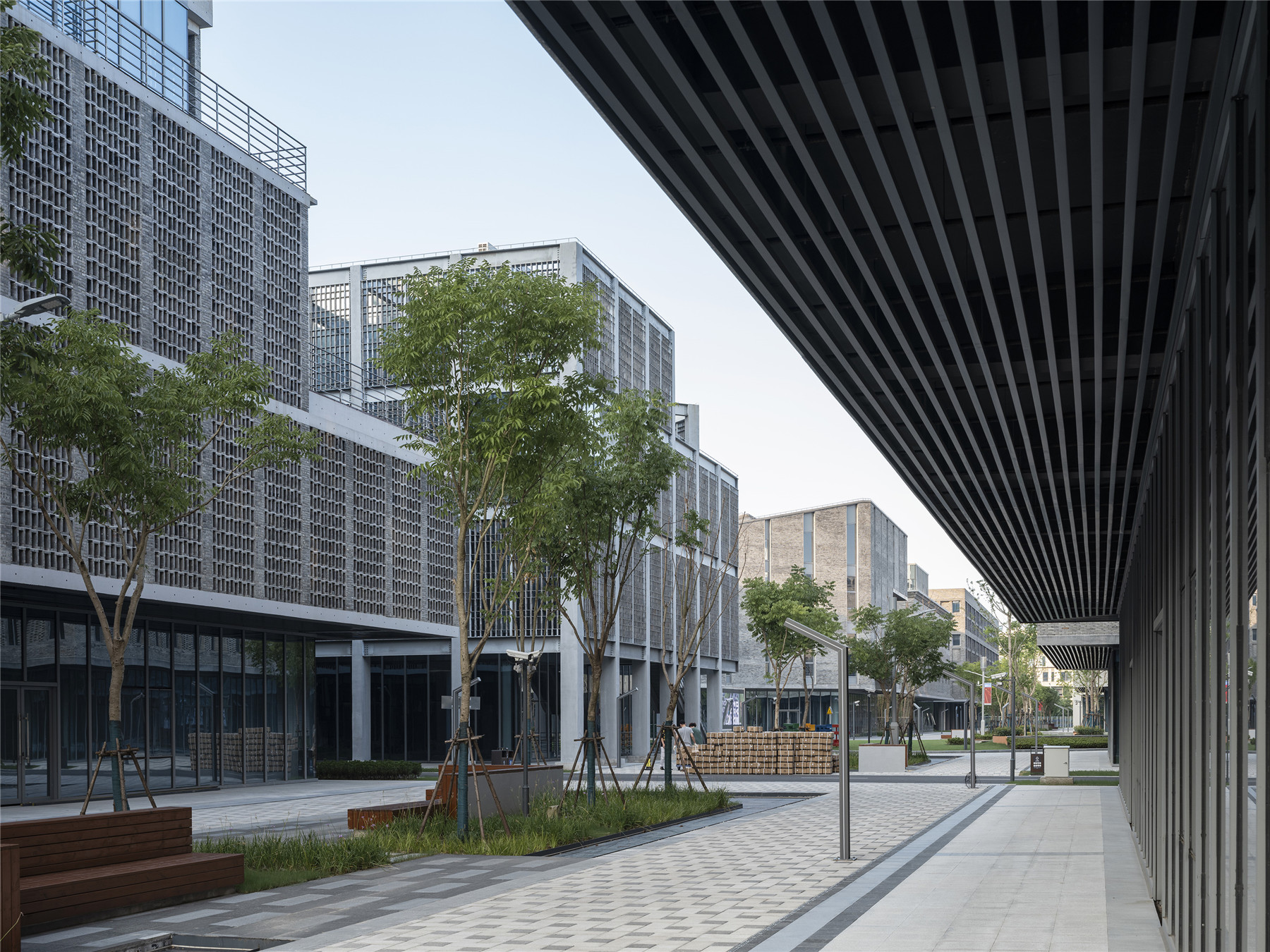
▲ 沿著步行道的騎樓 Under covered walkway along a pedestrain street - 攝影 田方方
街區(qū)
The Block
考慮到每家公司將擁有上限為4000平方米的建筑�����,零售店和餐飲希望位于街角位置����,便于步行及街區(qū)之間的連接性,以及創(chuàng)造盡可能多的建筑街道界面���,我們將街區(qū)的大小設(shè)置為41.2 x 41.2米����。After considering the facts that each company will own the building up to 4,000 square meters, retail outlets and eateries would desire corner locations, walk-ability and connectivity between blocks, and more building-street interface in general, we set the block size at 41.2 x 41.2 meters.
▲ 一個(gè)街角 A street corner - 攝影 田方方 ▲ 15號(hào)街區(qū)樓 Block-Building 15 - 攝影 田方方▲ 8號(hào)街區(qū)樓 Block-Building 8 - 攝影 田方方▲ 9號(hào)街區(qū)樓 Block-Building 9 - 攝影 田方方
其他重要的維度:
網(wǎng)格:街道中心之間相距大約為50米x 50米�。
街區(qū)/建筑模數(shù):將41.2米分解為5個(gè)8米的柱距,兩端再各有0.6米用于建筑外立面處理�����。41.2 x 41.2米也符合每座建筑4000平方米的容積率,該面積允許若干小公司或一家大公司占用一個(gè)街區(qū)���。這是一個(gè)單棟建筑的街區(qū)����。雖然所有的建筑大小相似���,但每個(gè)建筑的平面和立面設(shè)計(jì)都不同�����,這使得此開(kāi)發(fā)項(xiàng)目能夠滿足不同企業(yè)的空間和身份的需求���,并豐富了城市空間的體驗(yàn)。
Other important dimensions:
Grid: Approximately 50 meters x 50 meters from street center to street center.
Block/Building module: 41.2 meters break down to 5 x 8-meter column-to-column bays plus 0.6 meter on each end for potential architectural articulation of facade. 41.2 x 41.2 meter meets the floor area ratio of 4,000 square meters per block thus to allow a block to be occupied by a number of small firms or one large company. It is a single-building block. While all the buildings are of similar sizes, each one is designed differently in terms of floor plans and elevations, which allows the development to meet the varied space as well as identity needs of the businesses and enriches the experience in the urban spaces.
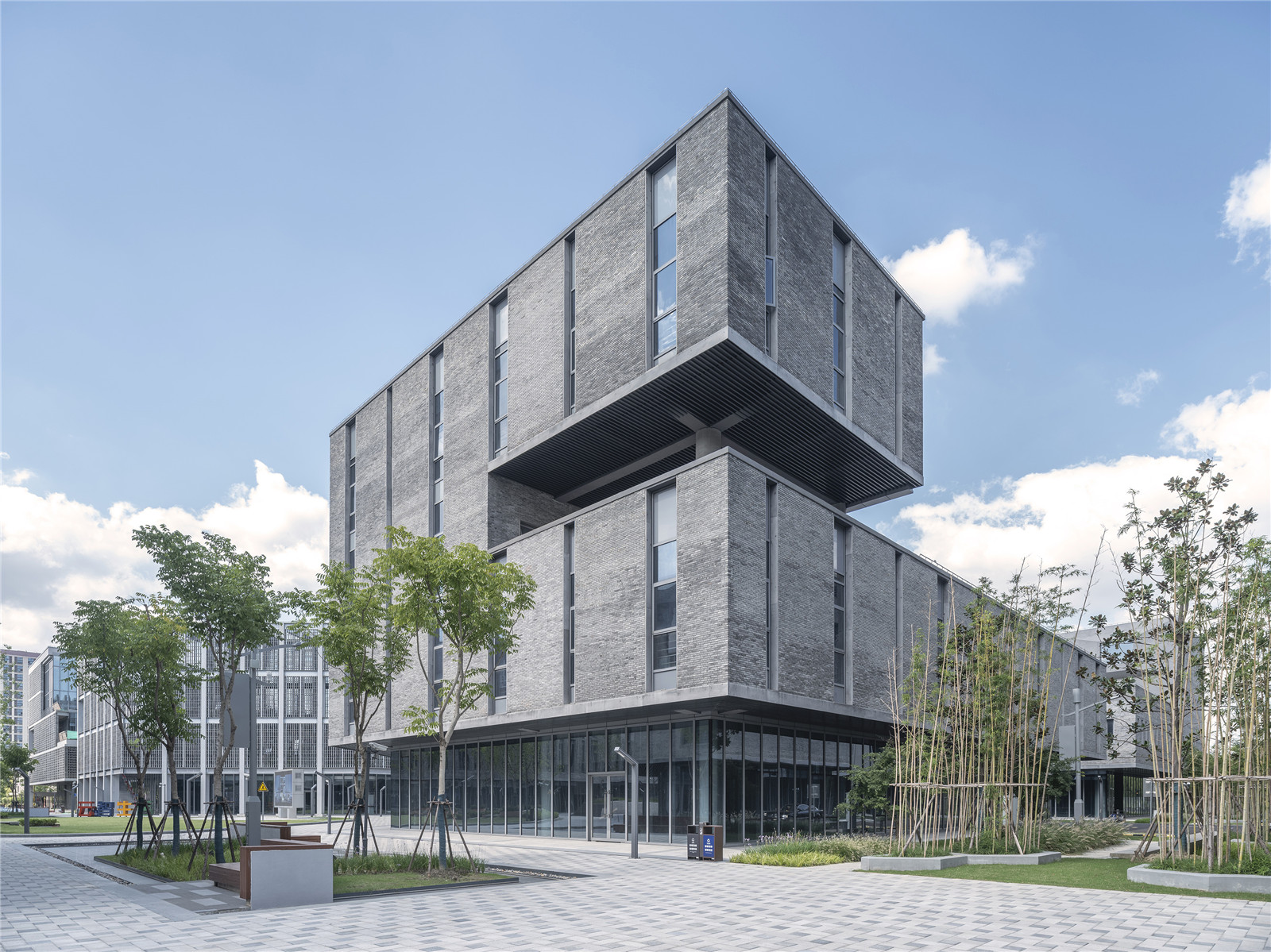 ▲ 12號(hào)街區(qū)樓 Block-Building 12 - 攝影 田方方▲ 變化的立面設(shè)計(jì) Changing facade design - 攝影 田方方
▲ 12號(hào)街區(qū)樓 Block-Building 12 - 攝影 田方方▲ 變化的立面設(shè)計(jì) Changing facade design - 攝影 田方方最早建成的4個(gè)街區(qū):當(dāng)我們開(kāi)始第一組4個(gè)街區(qū)的建筑設(shè)計(jì)時(shí)��,我們首先布置了一系列公共功能�,比如會(huì)議中心和酒店,其面積需求構(gòu)成一棟8層的建筑���。為了忠實(shí)于我們的總體規(guī)劃����,我們?cè)O(shè)計(jì)了兩組獨(dú)立的建筑:一組是四棟地面上4層的街區(qū)建筑;另一組是4層的環(huán)形建筑���,“漂浮”在街區(qū)建筑之上����。
這說(shuō)明��,微型街區(qū)有可能實(shí)現(xiàn)更高的密度���。
非常建筑設(shè)計(jì)了22棟街區(qū)建筑。
41.2街區(qū)與典型的500米以上街區(qū)截然相反(超大街區(qū)可達(dá)到800x800米)��,它是一個(gè)微型街區(qū)���。
First 4 blocks: When we started the architectural design of the first four blocks, we were asked to facilitate a number of public functions, such as a convention center and a hotel, which result in a 8-story buildings. To be true to our master plan, we designed two separate pieces of architecture: One is four 4-story block-buildings on the ground; another is 4-story continuous loop-building that “floats” on the top of the blocks.This is an indication that the mini block may work for a higher density.
There are 22 block-buildings designed by FCJZ.
The 41.2 block is the antithesis of the typical 500-meter and up mega block (Super mega block would go up to 800x800 meters). It's the Mini Block.
 ▲ 2013年最早建成的4個(gè)街區(qū) First 4 blocks were completed in 2013 - 攝影 田方方
▲ 2013年最早建成的4個(gè)街區(qū) First 4 blocks were completed in 2013 - 攝影 田方方
總計(jì)劃的概念通過(guò)以下幾項(xiàng)措施得到加強(qiáng):
綜合交通:
在規(guī)劃一系列步行街的同時(shí)�����,我們?cè)谝恍┐我慕煌骶€中引入了“共享街道”的概念�,將街道生活和車(chē)輛交通結(jié)合起來(lái)�����,同時(shí)實(shí)現(xiàn)了安全性和便捷性。該設(shè)計(jì)最終沒(méi)有能夠完全實(shí)現(xiàn)��。
騎樓系統(tǒng):
在街道部分中已經(jīng)提到��,街道兩側(cè)的所有建筑都必須有3米寬的柱廊或懸挑����,此要求在設(shè)計(jì)導(dǎo)則中有明確規(guī)定。
The master plan concept is reinforced by several other measures:
Integrated circulation:
While planning a series of pedestrian streets, we introduced to some of secondary circulatory routes the concept of “Shared Street” to mix street life and vehicular traffic through careful design to achieve safety and accessibility at the same time. Unfortunately, this idea was not fully realized.
Covered walkway system:
Already mentioned with the street, a 3-meter wide colonnade or cantilever is required on the street level for all the buildings, as specified in the design guidelines.
▲ 從街區(qū)和街道推進(jìn)到院落和天窗 From blocks and streets to courtyards and skylights - 攝影 田方方▲ 彎曲車(chē)行道 Bending vehicular street - 攝影 田方方▲ 車(chē)行道的一個(gè)彎道 A bend on a vehicular street - 攝影 田方方
建筑圍護(hù)結(jié)構(gòu):
二樓及以上的樓層不允許退紅線����,這也是設(shè)計(jì)導(dǎo)則中規(guī)定的。
設(shè)計(jì)過(guò)程:
在中國(guó)��,通常的控制性規(guī)劃沒(méi)有定義建筑物的具體位置和形狀��,因此無(wú)法控制城市空間的質(zhì)量���。我們制定了介于總體規(guī)劃和建筑設(shè)計(jì)之間的一套設(shè)計(jì)導(dǎo)則��,作為規(guī)劃實(shí)施的重要工具����。因此,其他參與該項(xiàng)目的設(shè)計(jì)院/事務(wù)所也都必須遵循這一設(shè)計(jì)導(dǎo)則�����。
Building envelope:
Setback is not permitted from the second floor and up, also as specified in the design guidelines.
The design process:
The conventional master plan for control in China does not define the specific locations and configurations of buildings and as a result it does not control the quality of urban spaces. We developed design guidelines between the stages of master plan design and architectural design as a critical tool for implementation. Therefore, other design institutes/offices participating in the project have all followed the design guidelines.
▲ 沿著步行道的騎樓 Under covered walkway along a pedestrain street - 攝影 田方方▲ 沿著車(chē)行道的騎樓 Under covered walkway along a vehicular street - 攝影 田方方▲ 21號(hào)街區(qū)樓局部開(kāi)放的首層 Block-Building 21 with partially open ground floor - 攝影 田方方▲ 13號(hào)街區(qū)樓內(nèi)庭院 Courtyard of Block-Building 13 - 攝影 田方方▲ 5號(hào)街區(qū)樓內(nèi)庭院 Courtyard in Block - 攝影 田方方▲ 5號(hào)街區(qū)樓走廊 Passageway of Block-Building 5 - 攝影 田方方▲ 11號(hào)街區(qū)樓內(nèi)庭院 Courtyard of Block-Building 11 - 攝影 田方方▲ 7號(hào)街區(qū)樓室內(nèi) Interior of Block-Building 7 - 攝影 田方方▲ 14號(hào)街區(qū)樓室內(nèi) Interior of Block-Building14 - 攝影 田方方 ▲ 9號(hào)街區(qū)樓室內(nèi) Interior of Block-Building 9 - 攝影 田方方
▲ 7號(hào)街區(qū)樓天窗 Skylights of Block-Building 7 - 攝影 田方方▲ 11號(hào)街區(qū)樓立面細(xì)部 Facade detail of Block-Building 11 - 攝影 田方方▲ 20號(hào)街區(qū)樓立面局部 Facade partial of Block-Building 20 - 攝影 田方方
圖 紙
項(xiàng)目完成后����,我們相信:小就是美。
但仍有一個(gè)問(wèn)題懸而未決:城市性到底是什么?
Upon the completion of the project, we believe:Small is beautiful.
Yet one question remains unanswered:What is urbanity?
項(xiàng)目信息
客戶: 嘉定工業(yè)區(qū)
地點(diǎn): 嘉定工業(yè)園區(qū)���,嘉定區(qū)�����,上海
主持建筑師: 張永和
項(xiàng)目團(tuán)隊(duì): Dan Chen、劉靖�、劉向暉、蔡峰�����、董書(shū)音���、林方杰��、劉揚(yáng)�����、郭慶民�����、吳瑕��、黃舒怡����、沈愉恒、趙春雷等
設(shè)計(jì)合作:上海建筑設(shè)計(jì)研究院有限公司
建筑面積: 70085.7 ㎡
結(jié)構(gòu)材料: 框架混凝土拱結(jié)構(gòu)����,鋼桁架結(jié)構(gòu)
設(shè)計(jì)周期: 2008 - 2014
竣工時(shí)間: 2020
攝影師: 田方方/Tian Fangfang
Project Info
Client: Shanghai Jiading Industrial Zone
Location: Jiading Industrial Park, Jiading District, Shanghai, China
Principal Architects: Yung Ho Chang
Project Team: Dan Chen, Liu Jing, Liu Xianghui, Cai Feng, Dong Shuyin, Lin Fangjie, Liu Yang, Guo Qingmin, Wu Xia, Huang Shuyi, Shen Yuheng, Zhao Chunlei etc.
Collaboration: Arcplus Institute of Shanghai Architectural Design & Research (Co., Ltd)
Building Area: 70085.7 m2
Structure and Material: Reinforced concrete arch, Steel truss
Design Period: 2008 - 2014
Completion Time: 2020
版權(quán)聲明:本文由作者于景觀中國(guó)網(wǎng)發(fā)布,僅代表作者觀點(diǎn)���,不代表景觀中國(guó)網(wǎng)立場(chǎng)�。如轉(zhuǎn)載�����、鏈接、轉(zhuǎn)貼或以其它方式使用本稿�����,需注明“文章來(lái)源:景觀中國(guó)網(wǎng)”�����。如有侵權(quán)�����,請(qǐng)與發(fā)布者或我們聯(lián)系��。
投稿郵箱:info@landscape.cn
項(xiàng)目咨詢:18510568018(微信同號(hào))
 京公海網(wǎng)安備 110108000058號(hào)
京公海網(wǎng)安備 110108000058號(hào)

